Onto the back nine...
Hole No.10: Par 4 438/434/418/412/412 (original 480)
We start off again from the clubhouse, but this time we're heading in a north to south direction with a tee shot to a slightly blind ridge in the distance. At 480 in the original configuration, the whole could have played as a par 5. The fairway tends to slightly turn left to right. The approach gives a feeling the green is crowded by the trees in the back. The opening to the green is pretty open on this one. The green itself is one of the most challenging on the course. Pin placement middle right can be brutal. It's a very tough putt to get close on without going off the green. If you land it left ... you're just about dead unless you have a deft touch. The green will let your shot in to the left and turn to the right. So a green with a lot of movement.

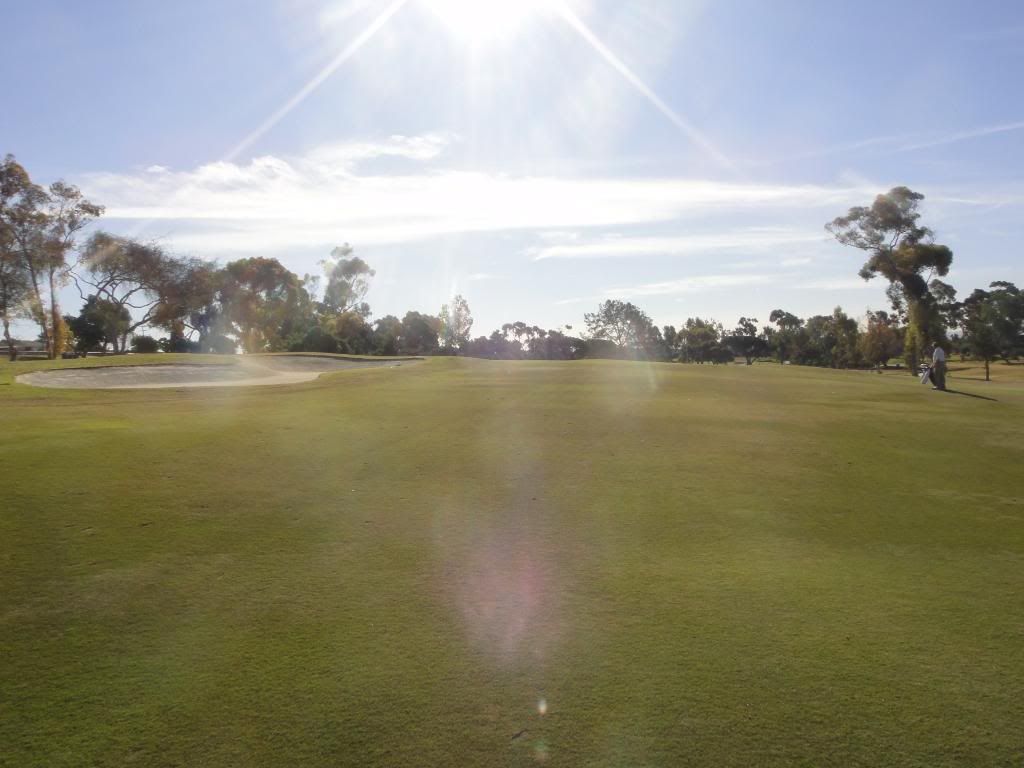
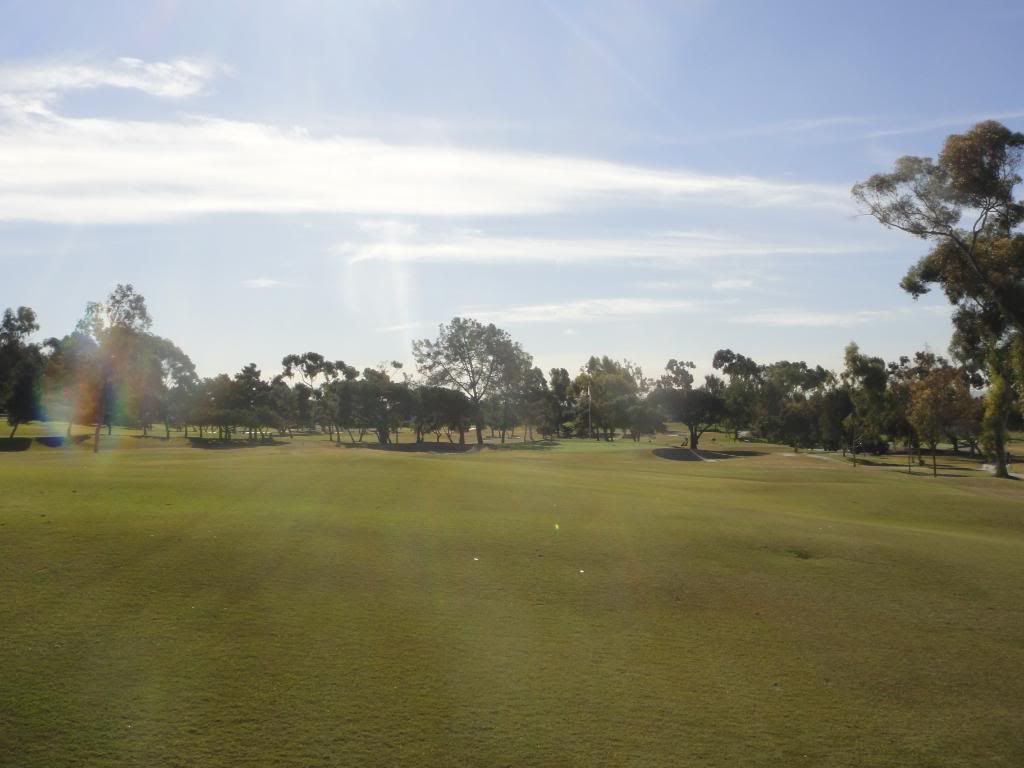
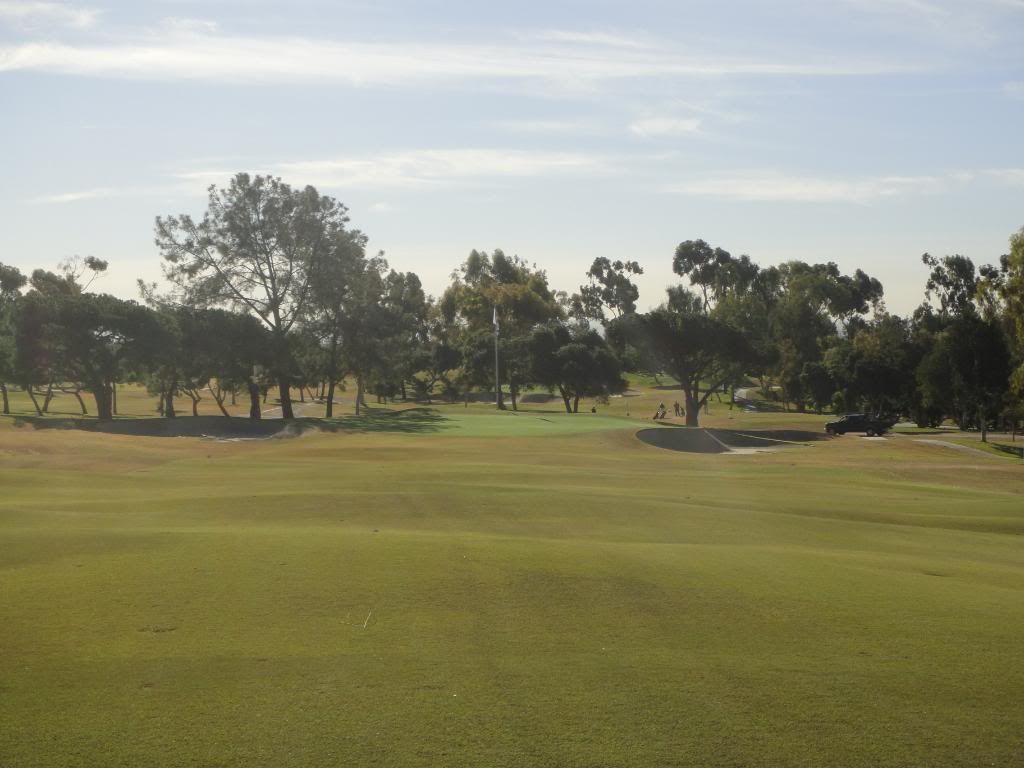
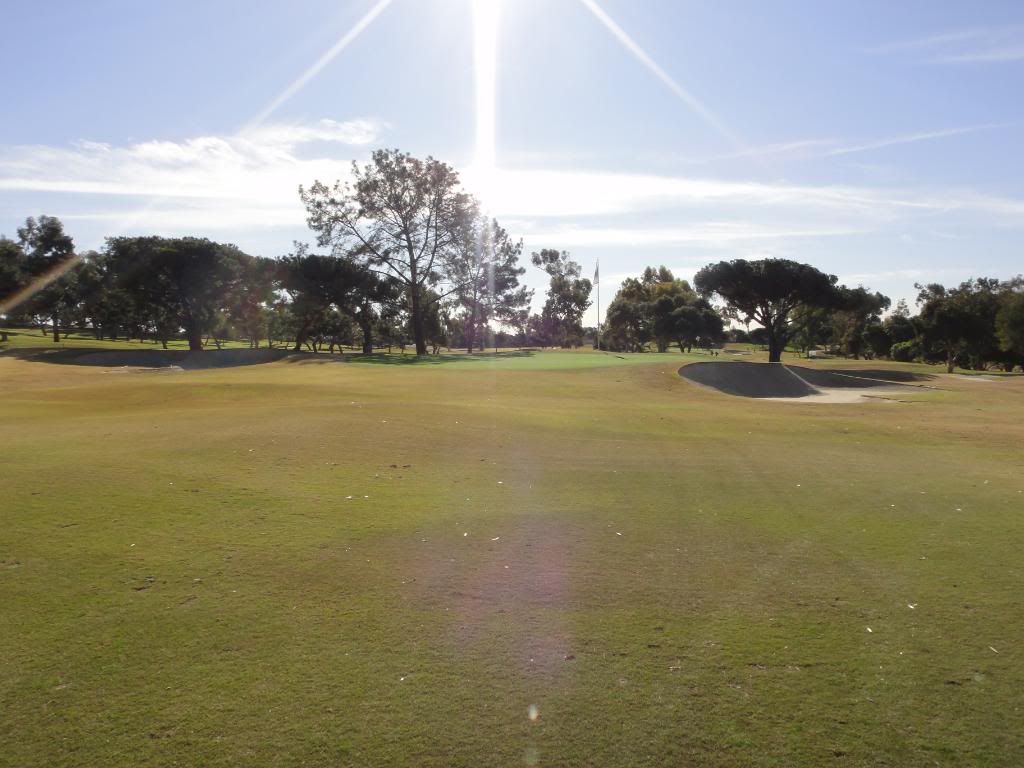
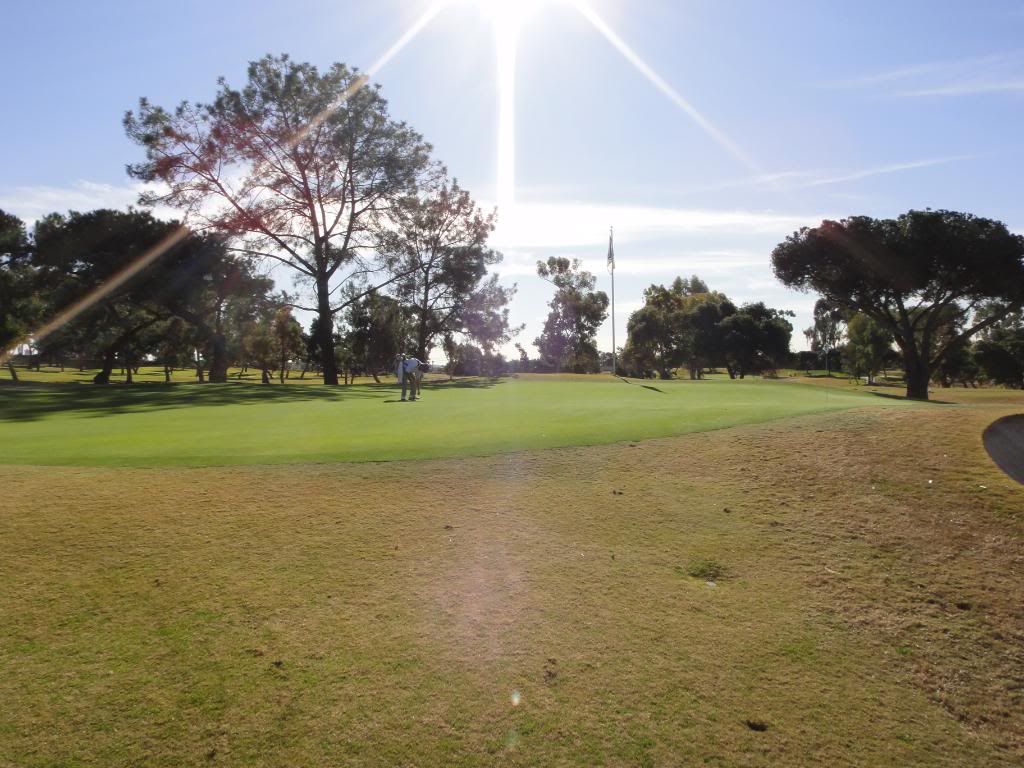
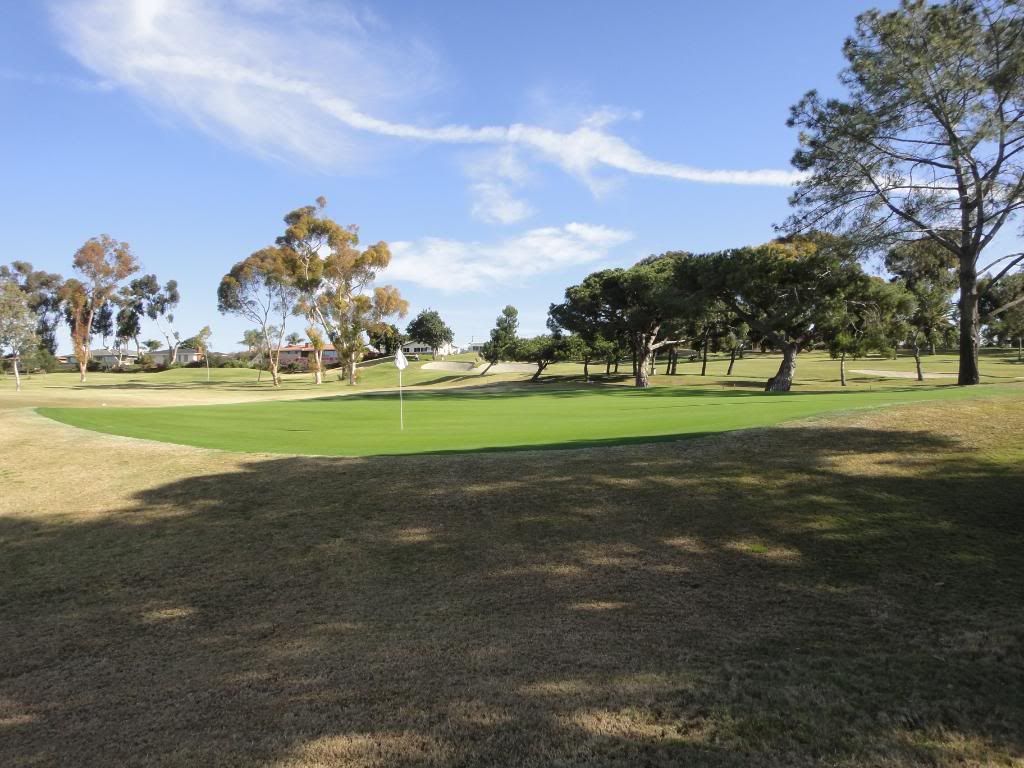 Hole No.11:
Hole No.11: Par 3 158/145/137/123/118 (original 320)
This medium par 3 shows having originally been a par 4. I really liked how it set up to the eye off the tree and the bunkers to install a sense of respect. The green was plenty to handle as well. The green is bisected by a diagonal ridge that runs from bottom right towards upper left. From the '53 aerial, it looks like hole might have been shifted to the left as part of the expansion made to either accommodate the lengthened 8th with the pond or perhaps the range. Either way, two greens side by side appear in the aerial... So a mystery as to why things changed on this hole. I do not have a date to the old photo here.
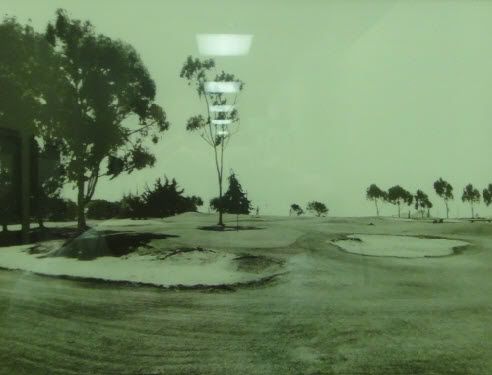
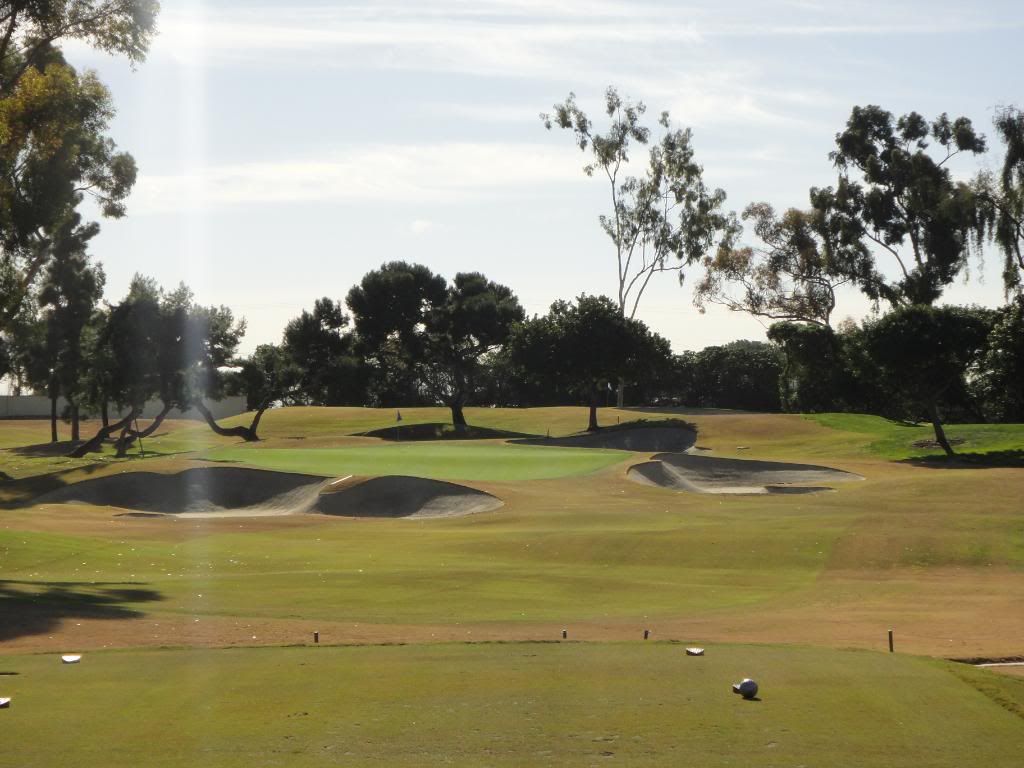




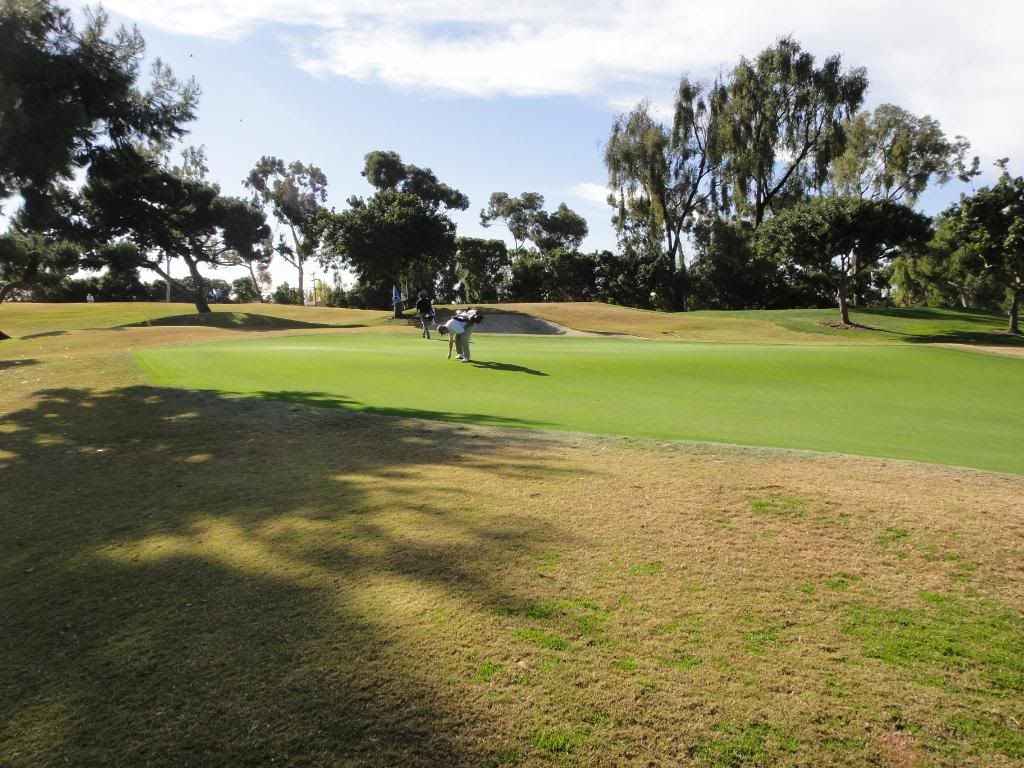

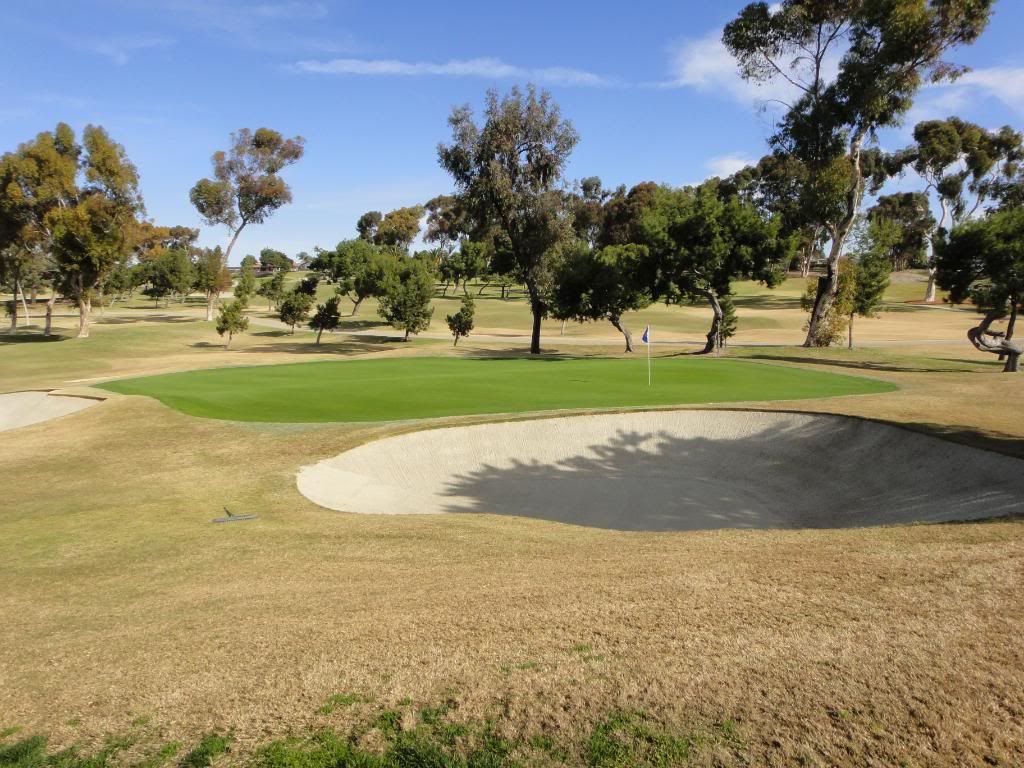 Hole No.12:
Hole No.12: Par 4 390/385/369/309/309 (original 198)
It's not clear if the original played as a long par 3 or short par 4, but the hole is significantly longer. We head back out west now and the hole runs as a dogleg left. The hole gently rises upon reaching the apex and then plateaus nicely to a green protected ... left and right by bunkers. I think we might have one of the best greens on the course here as well.
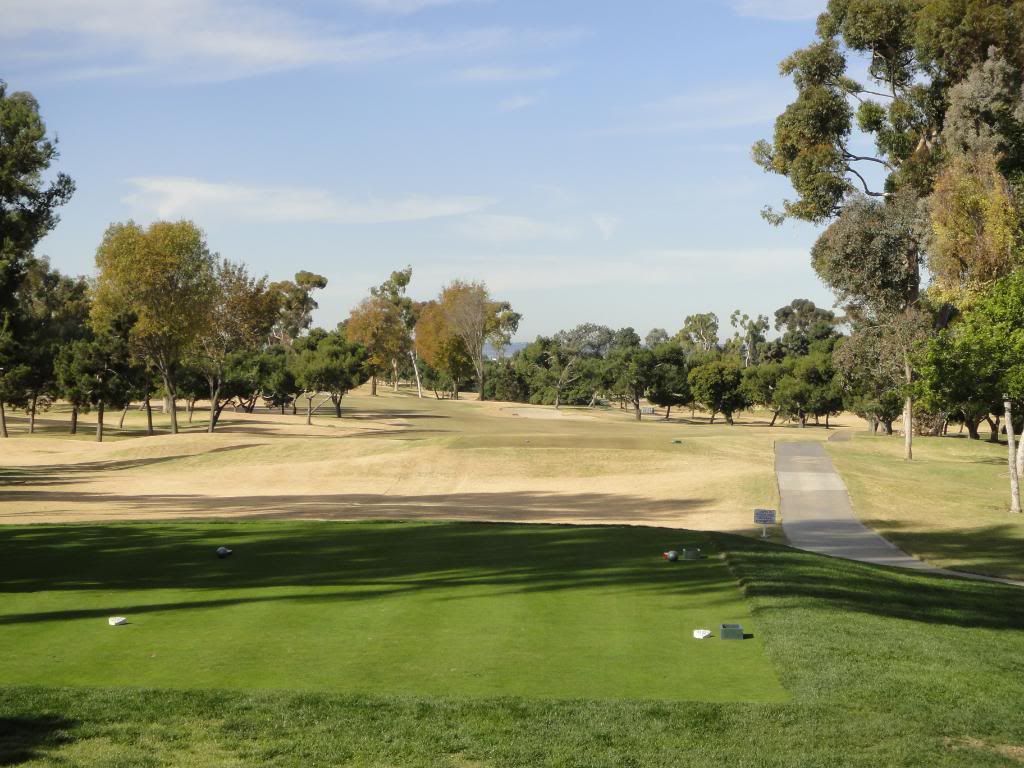


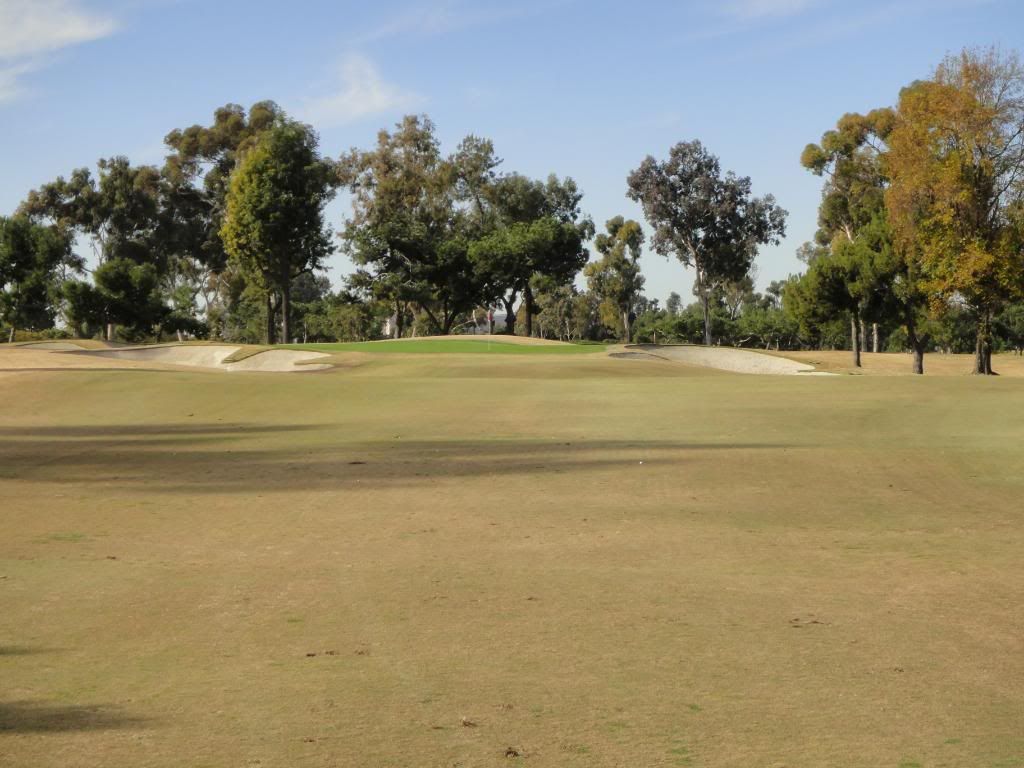

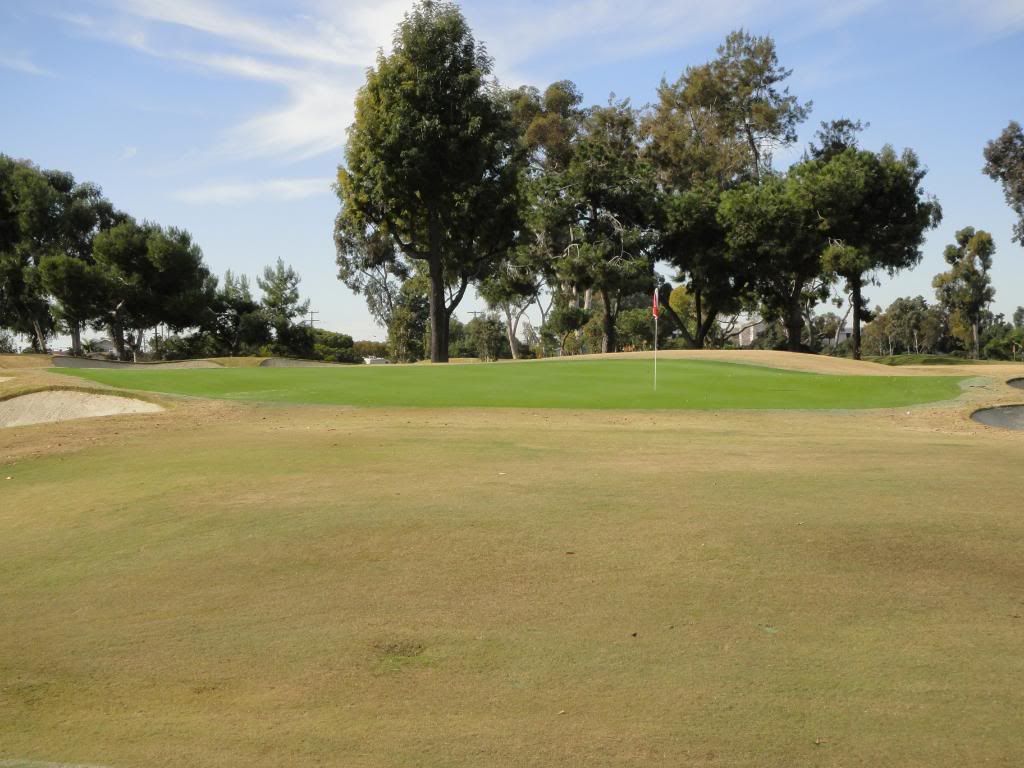
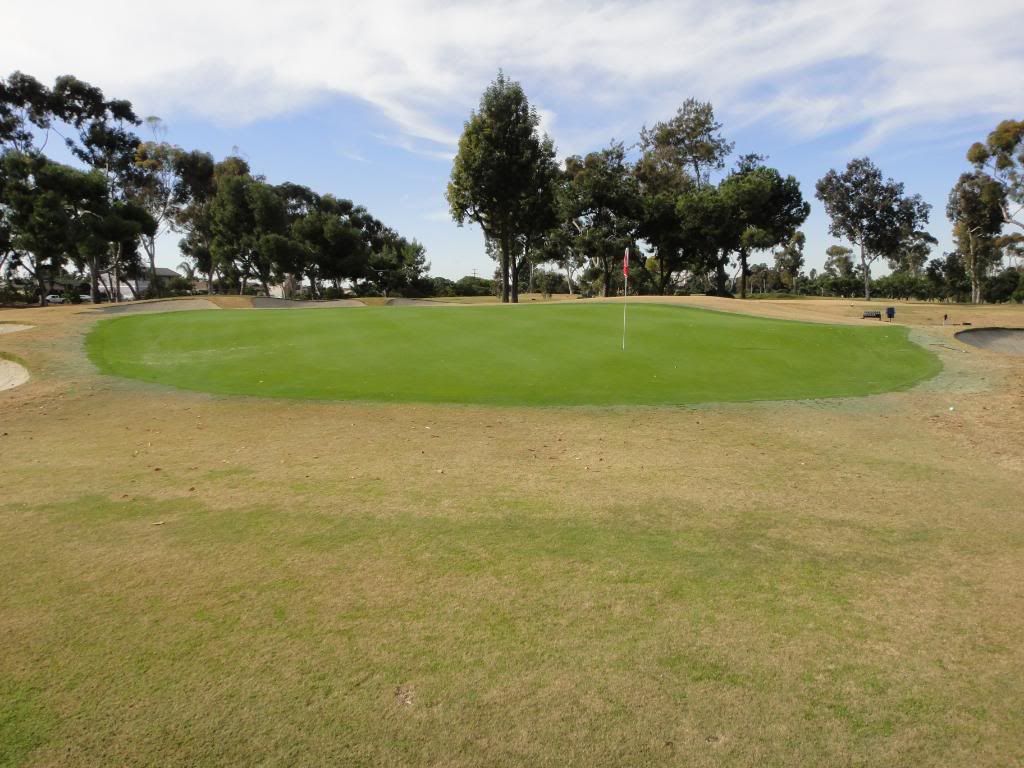
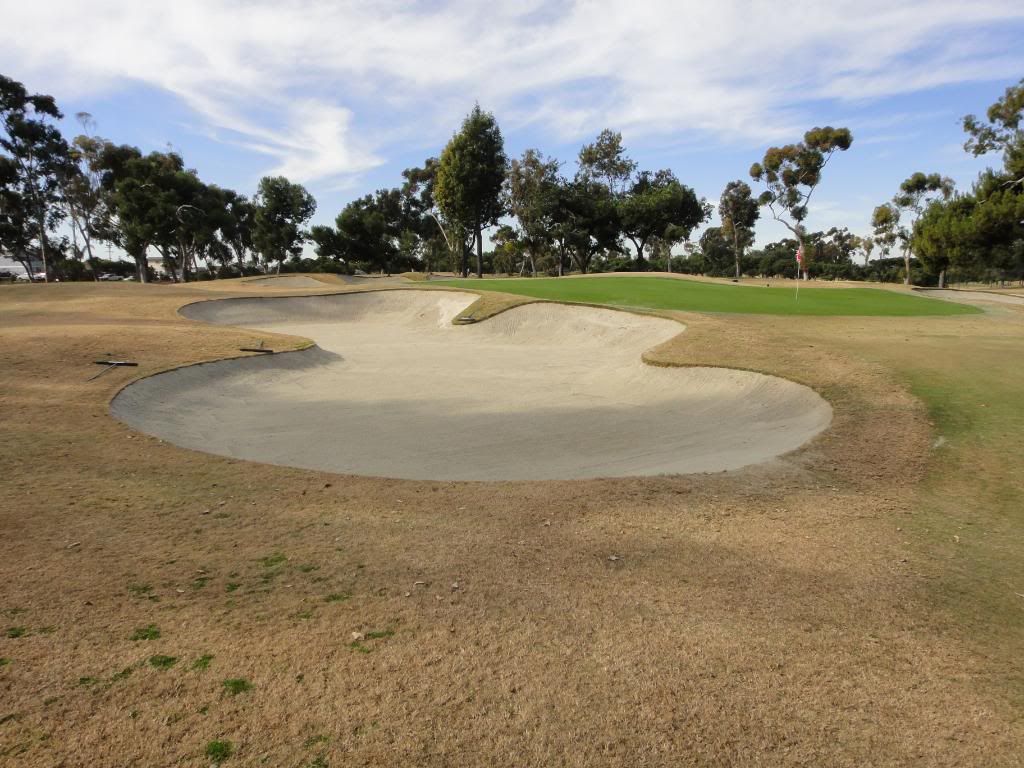

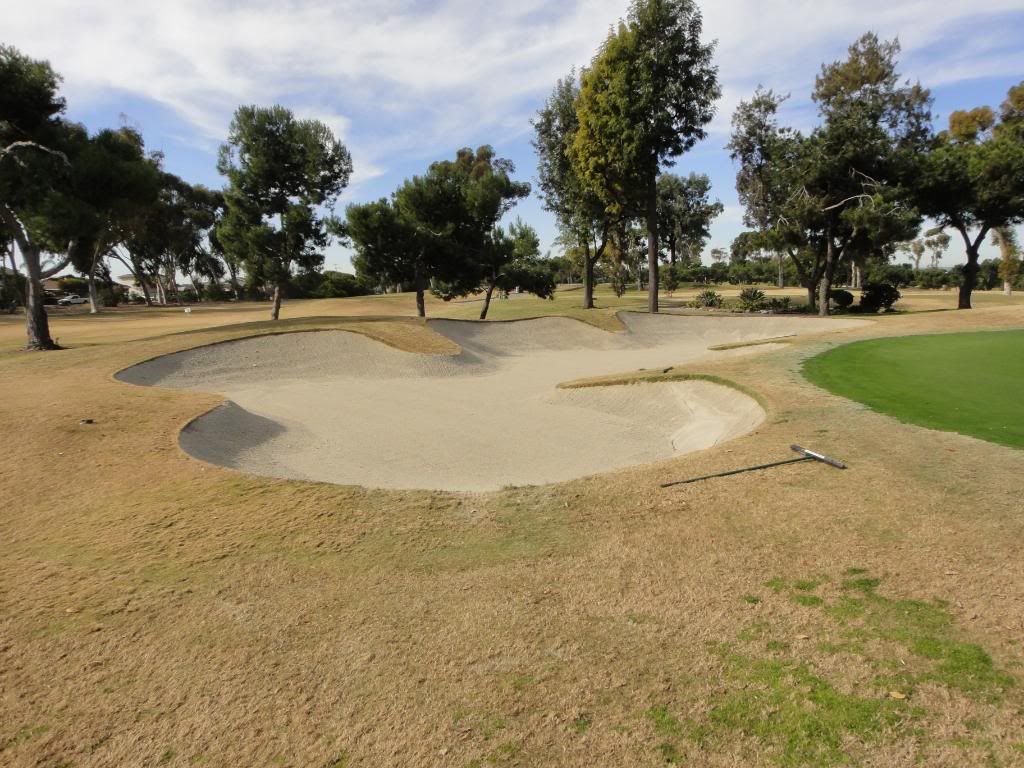
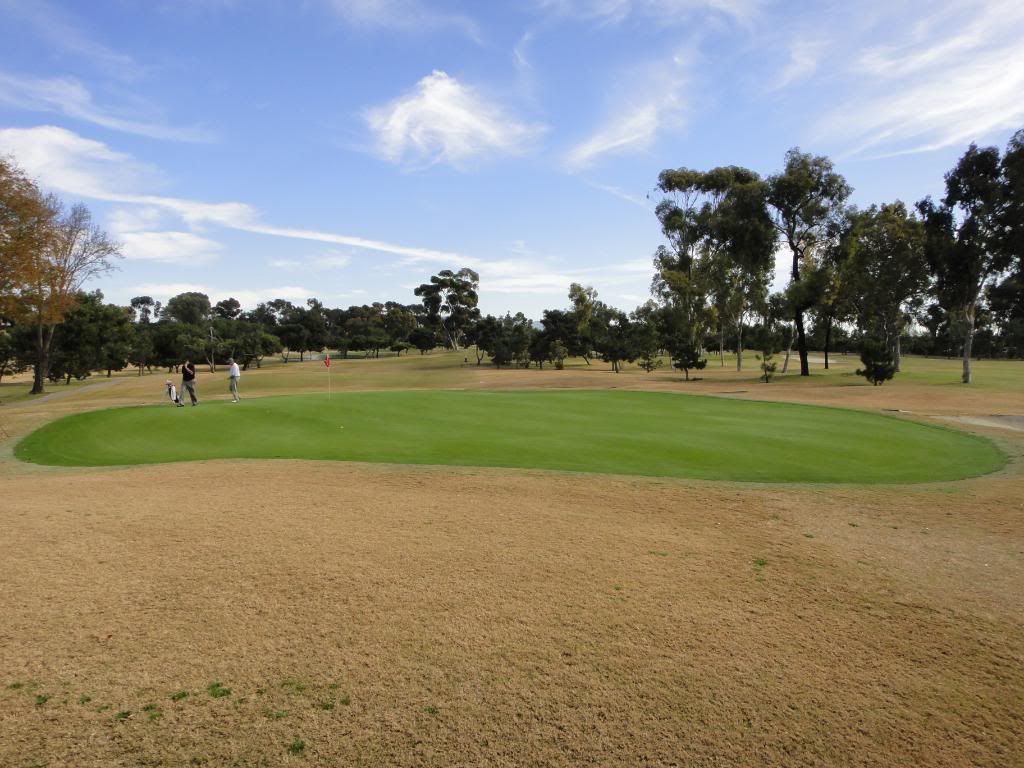 Hole No.13:
Hole No.13: Par 3 202/181/162/144/114 (original 449)
We have another good par 3 in the 13th and its length is closer to that of the superb 6. The direction is south to north with bunker protection left, right, and back left. The ball will turn sharply from right to left upon entering the green and the opening to the green encourages a right to left draw off the tee. The original was likely a par 4 at 449. It's not clear if the routing changed on this back nine, but we see some significant differences in length to the holes from the original card to today. Another good green. Liked this one despite making a mess of it...

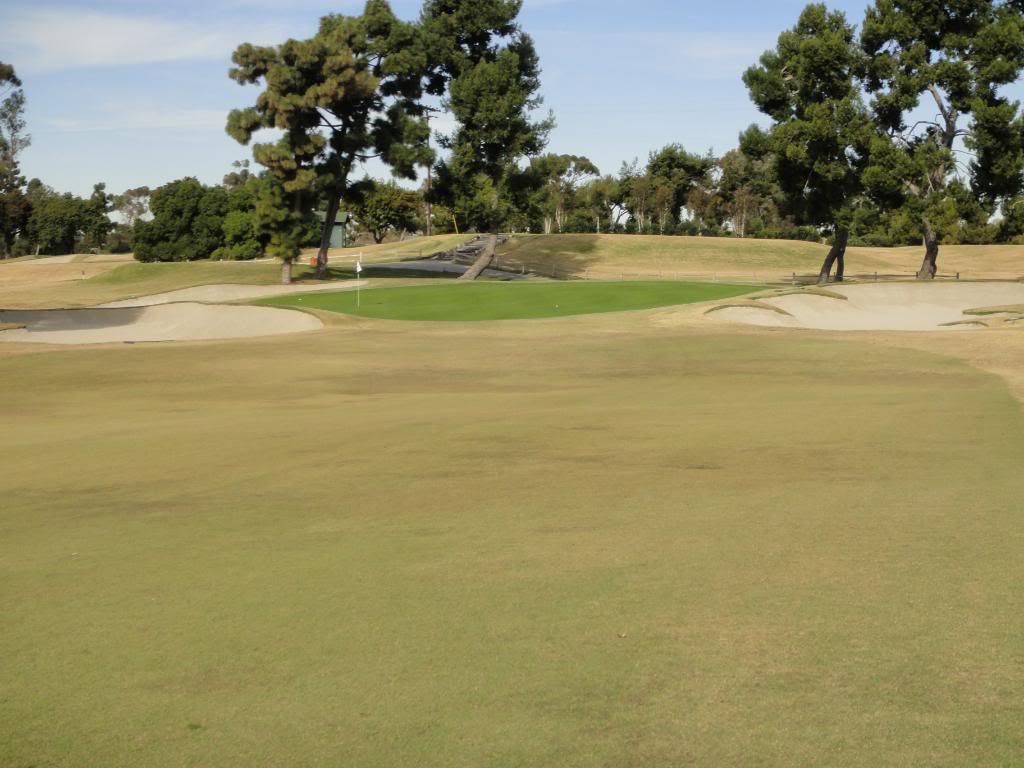
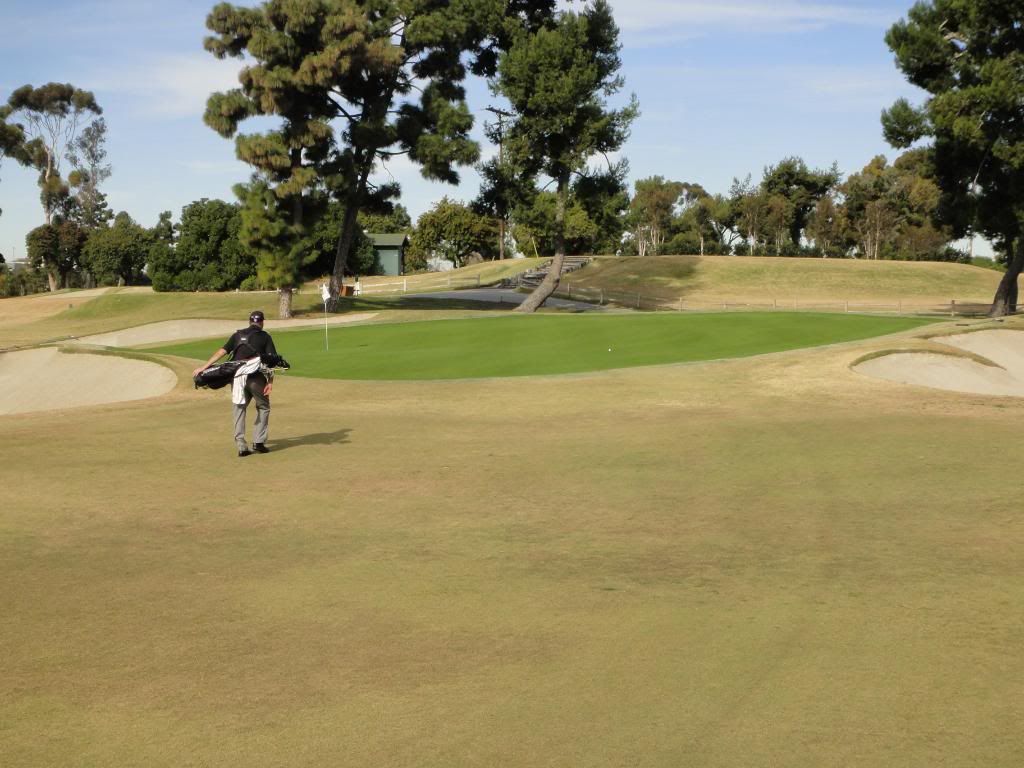
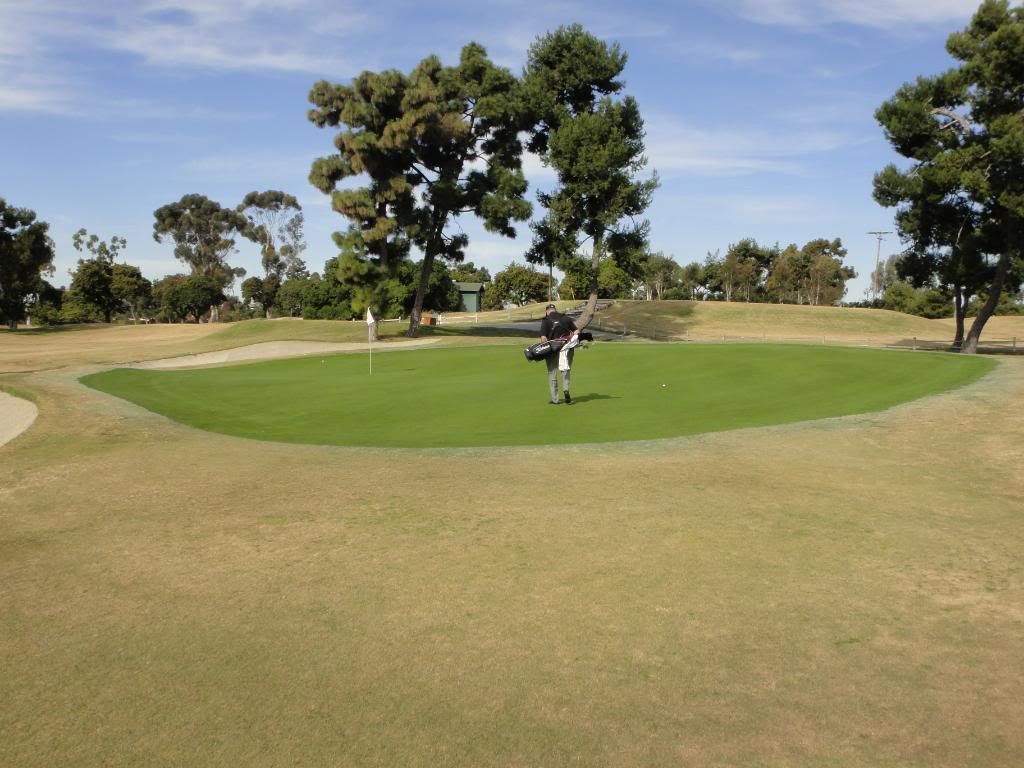

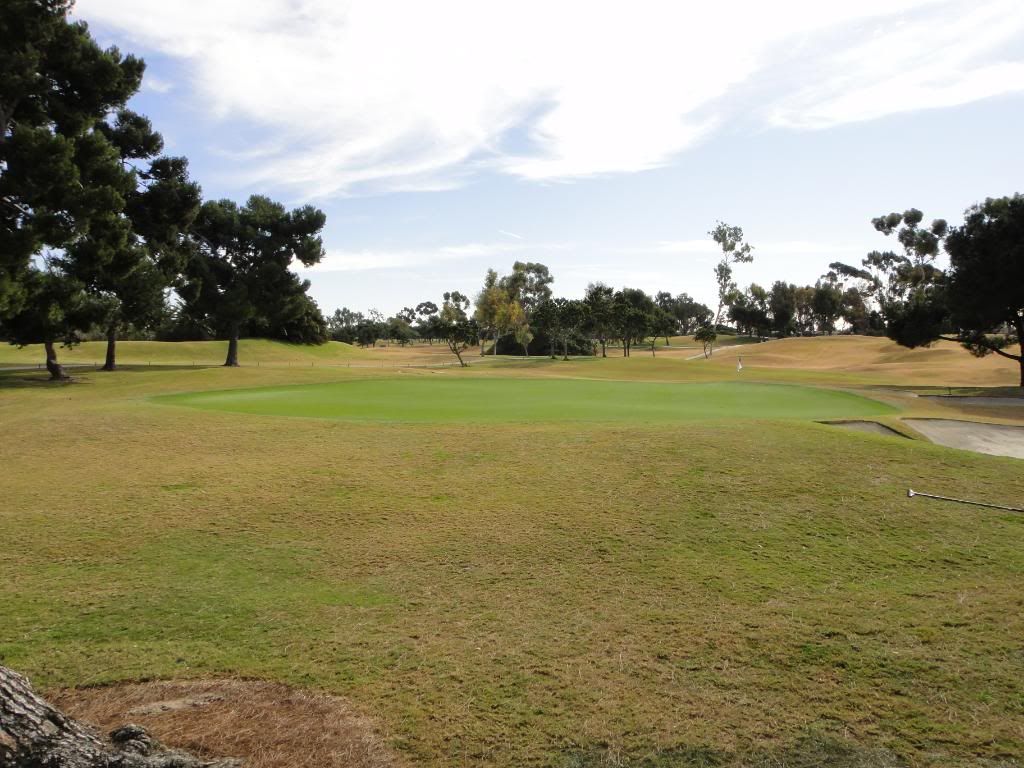 Hole No.14:
Hole No.14: Par 5 485/478/471/444/347 (original 382)
The medium length par 5 14th presents what I feel is one of the best tee shots I've been exposed to. Just look at the movement off the tee! Wonderful! Bring your Vijay fade to this one because that's what is called for. We head back out west to the very edge of the property. As exciting as the tee shot is, I was disappointed with the approach. The fronting bunkers feel very evenly positioned. The shaping of the bunkers doesn't quite do it for me, but they are consistent in feel for a pot like bunker with the steep faces and flattish bottoms. The green is massive, runs shallow for a long approach, and is quite good with some subtle movement. The mounds in the back are also evenly positioned and in such a way as to appear placed in between the fronting bunkers... I'll remember the tee shot on this one and the green.
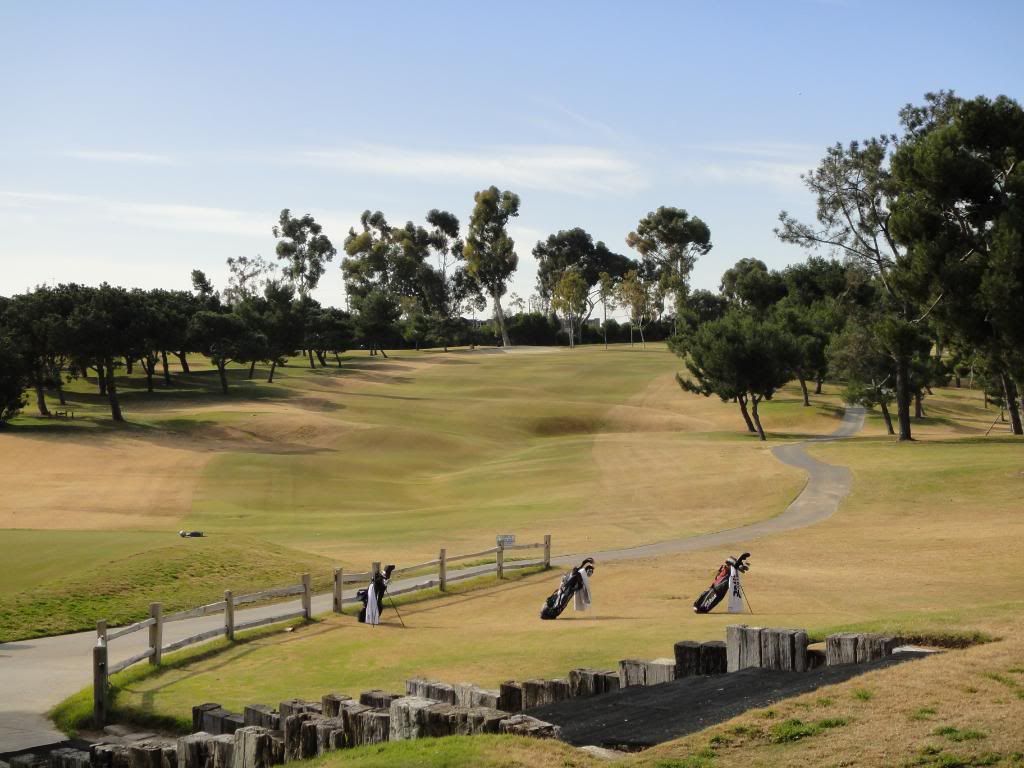
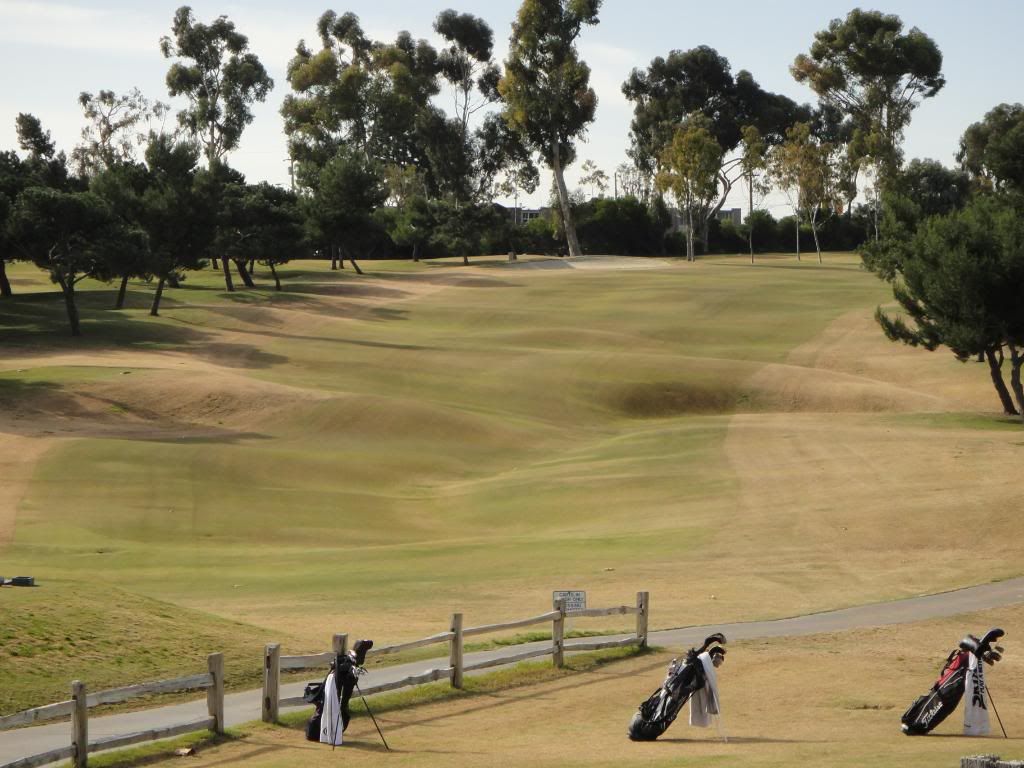
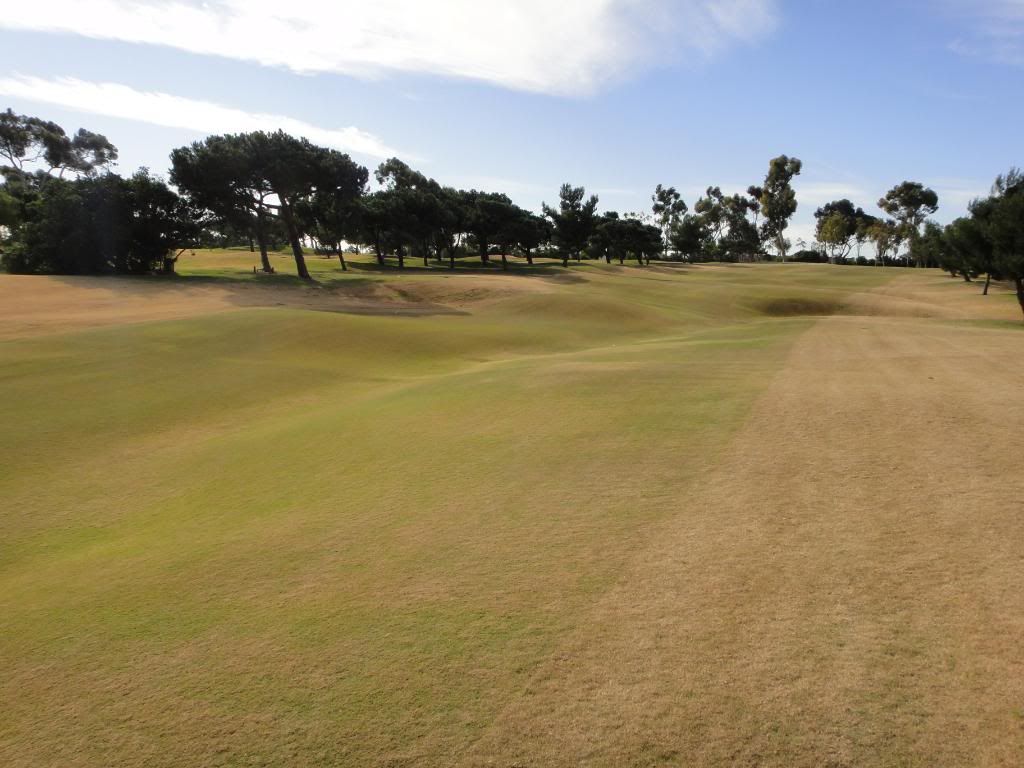

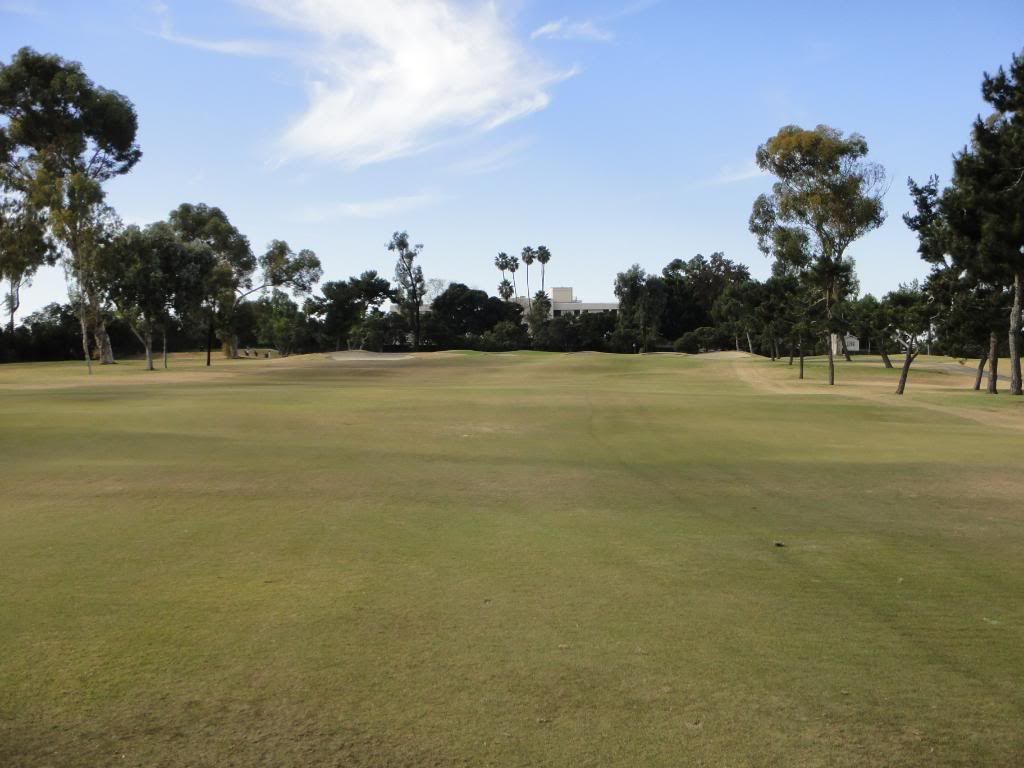
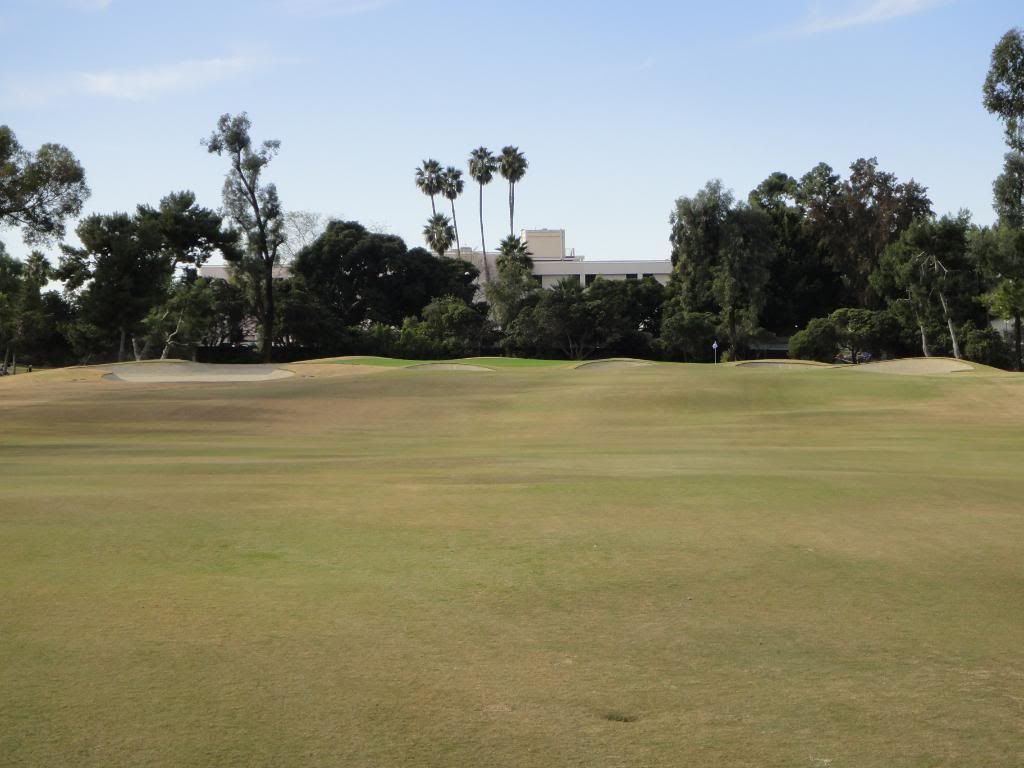
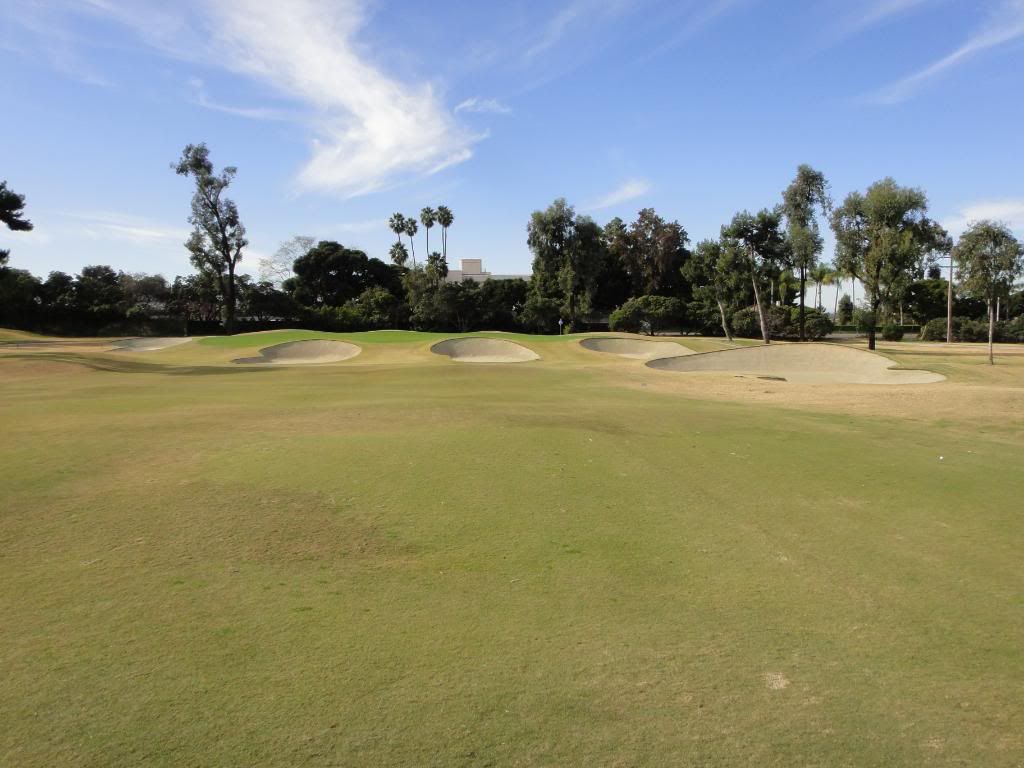
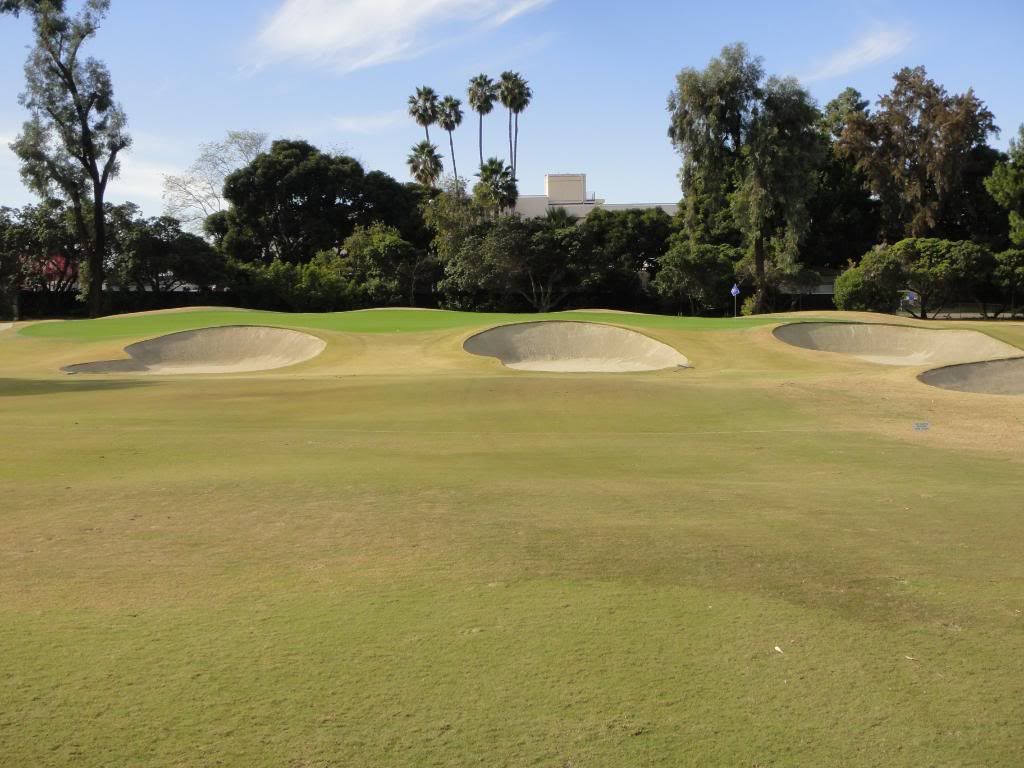

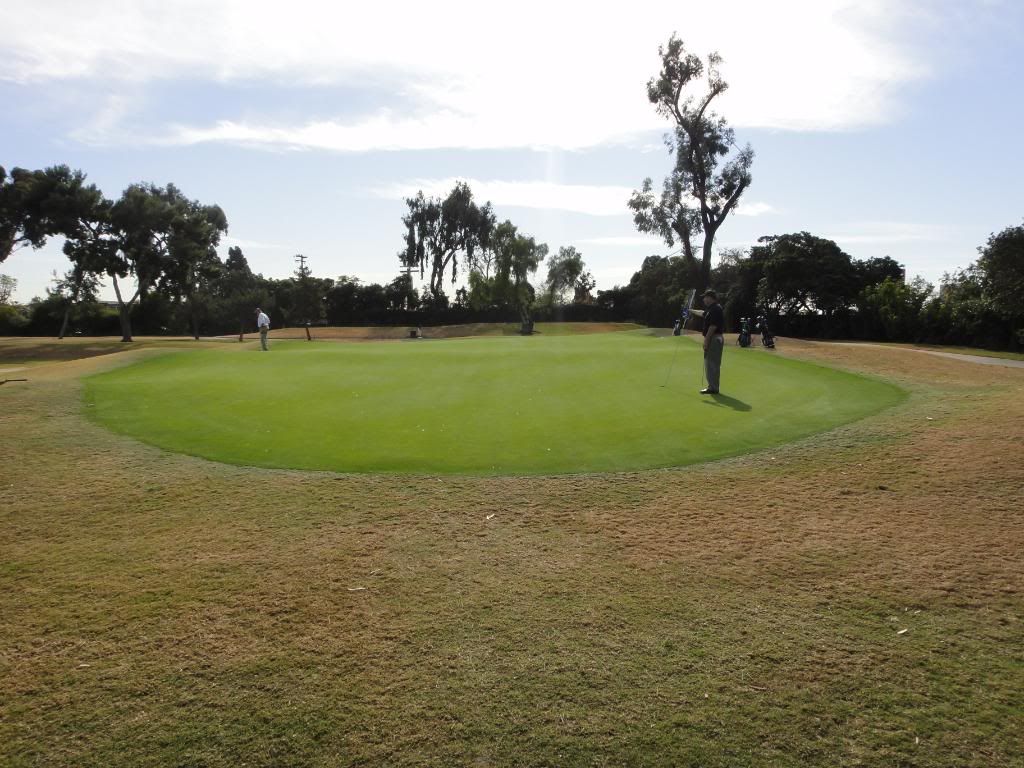
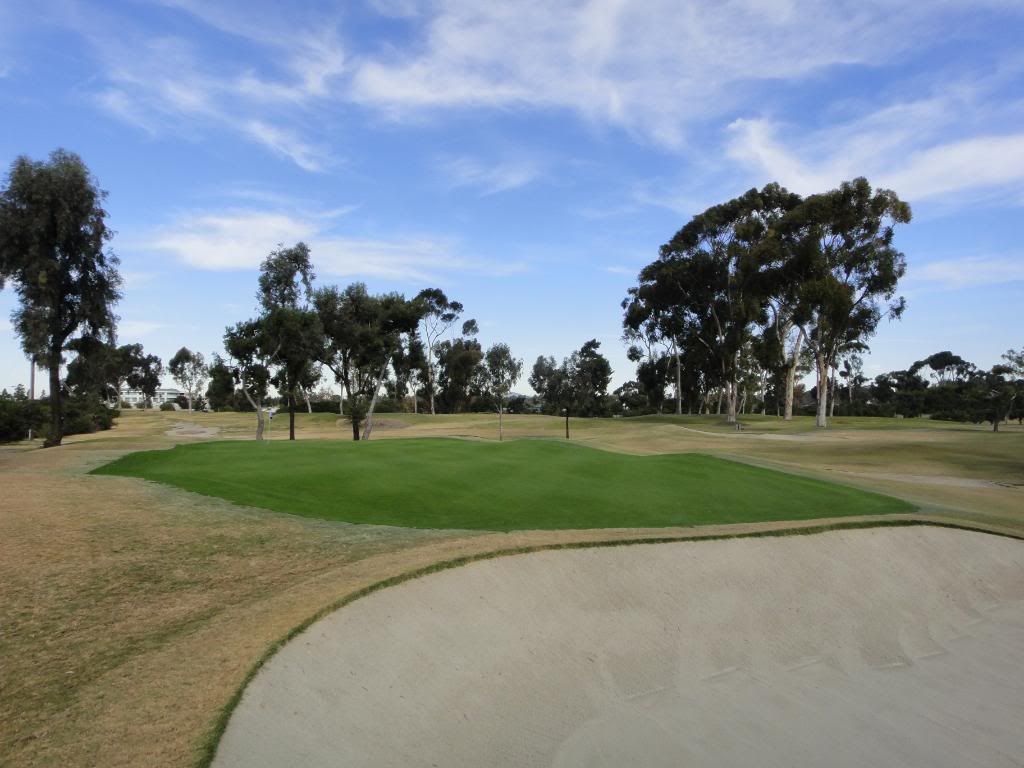
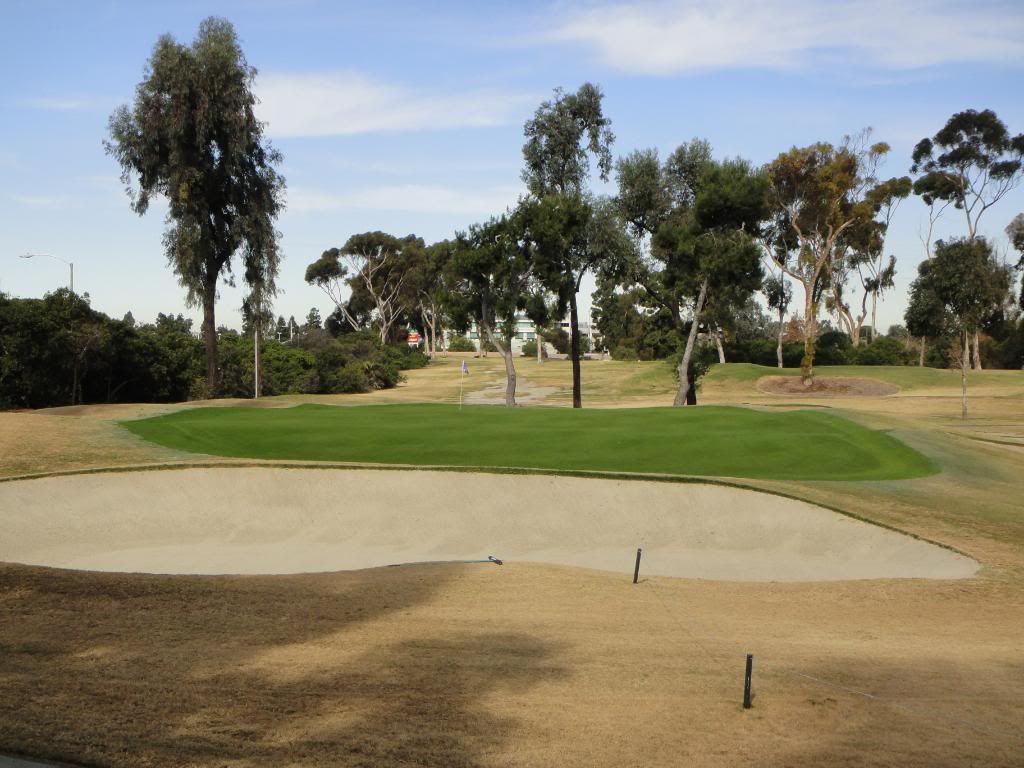 Hole No.15:
Hole No.15: Par 4 397/391/376/262/262 (original 525)
We make an about turn heading due east with this par 4. It looks like originally at 525, it would have been a par 5. The strategy to this hole as I mentioned earlier has been changed to reward avoiding the fairway bunker left. There's a slight ridge / knoll to the left and short of the green. In this area we would have had a pot like bunker previously and the current fairway bunker right was not in place. The green is solid and as mentioned earlier blends in well without any propping up.

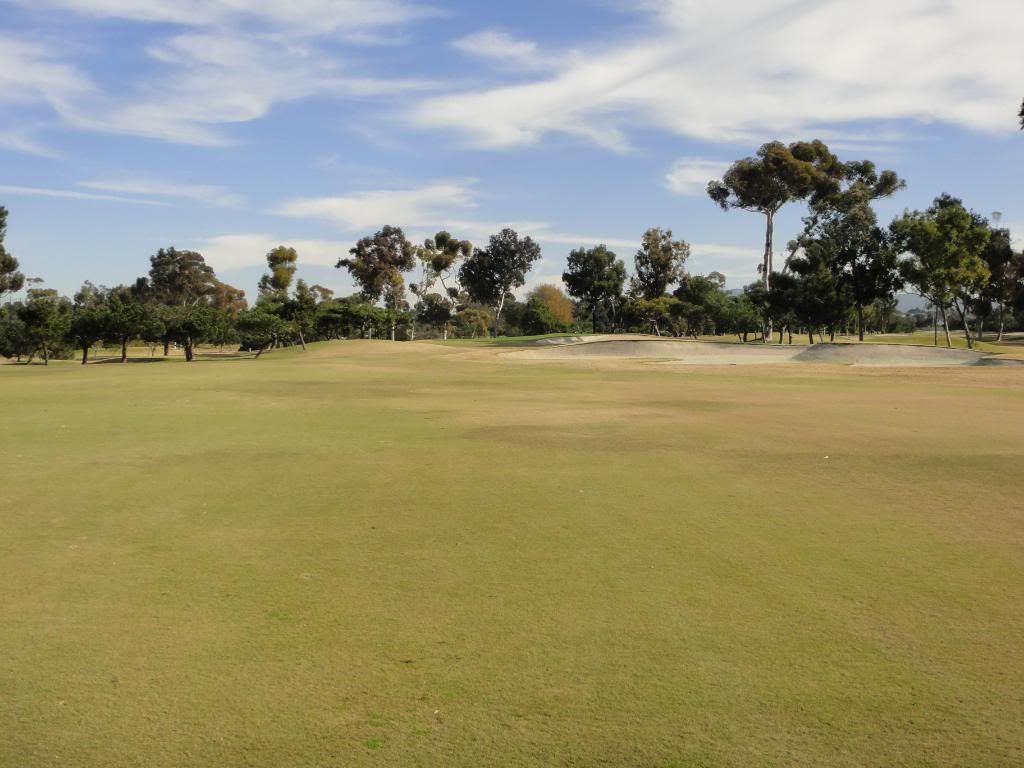




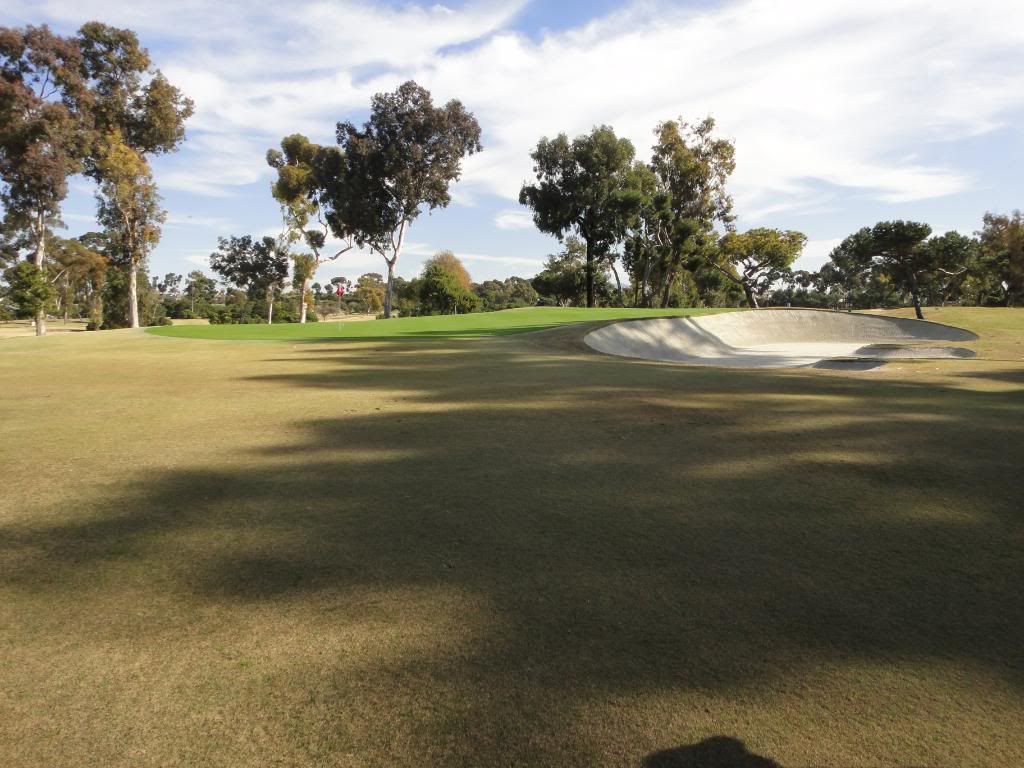
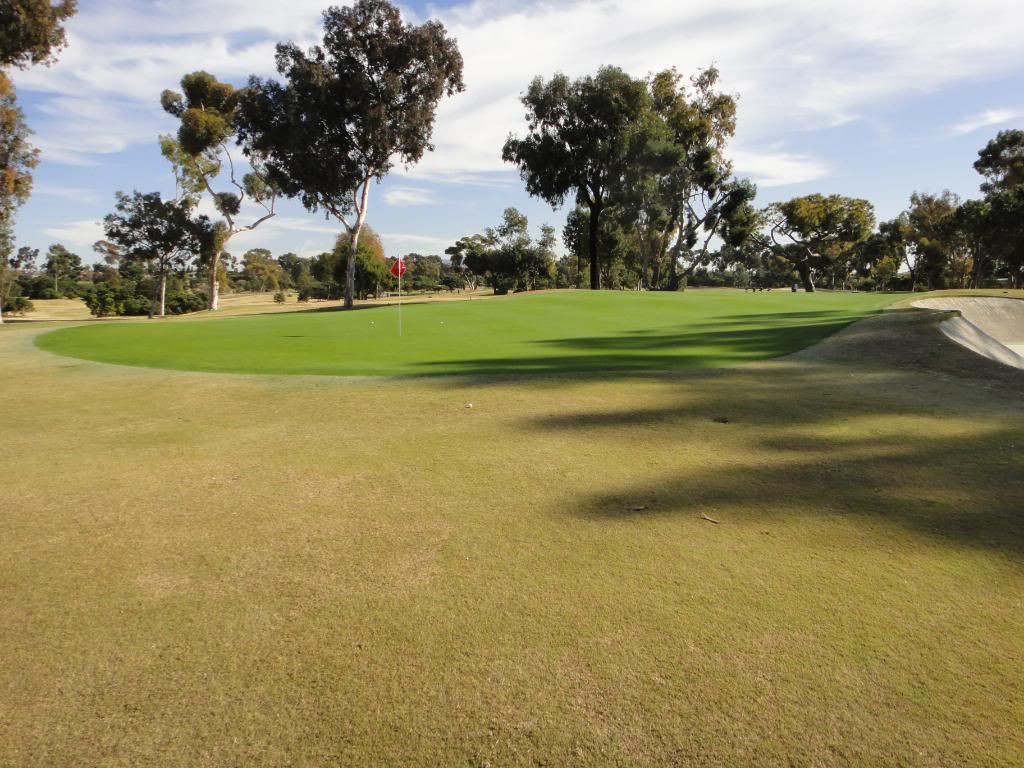
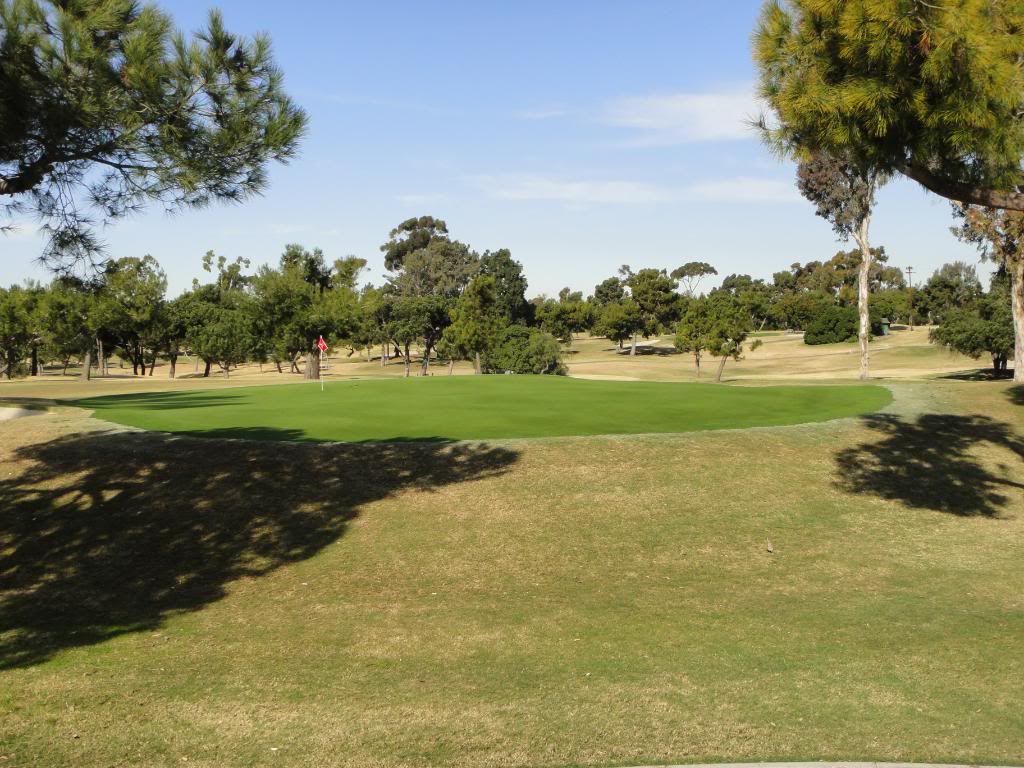 Hole No.16:
Hole No.16: Par 5 603/526/507/474/402 (original 139)
Our last par 5 continues in the west to east direction back towards the clubhouse. The 15th and 16th lie on some of the flattest portions of the property and lack the same interest for me as the rest of the course. Given what we've seen until now in terms of a strategy based on avoidance and the orientation of this green, I simply don't understand the fairway bunker placement short and right of the green. Shouldn't it be to the left? Avoiding this bunker does not produce a reward. If anything you'll have a tougher angle into the green. So its placement is inconsistent in my mind. Fortunately, the green makes up for this. A fun green with plenty of challenge.
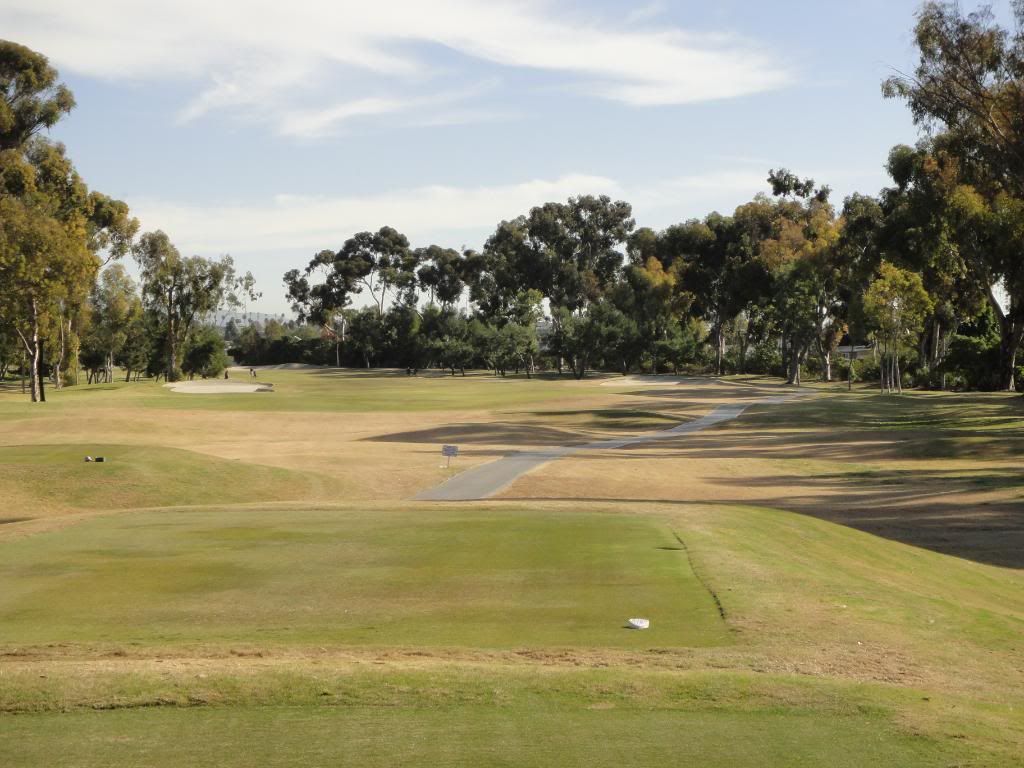
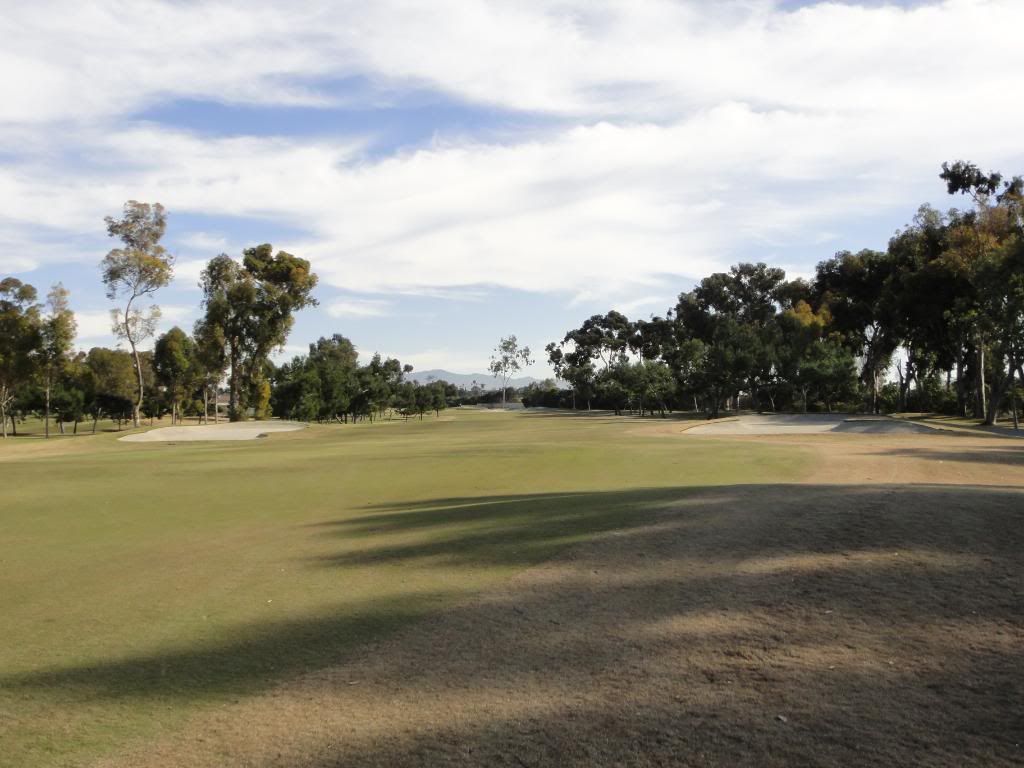
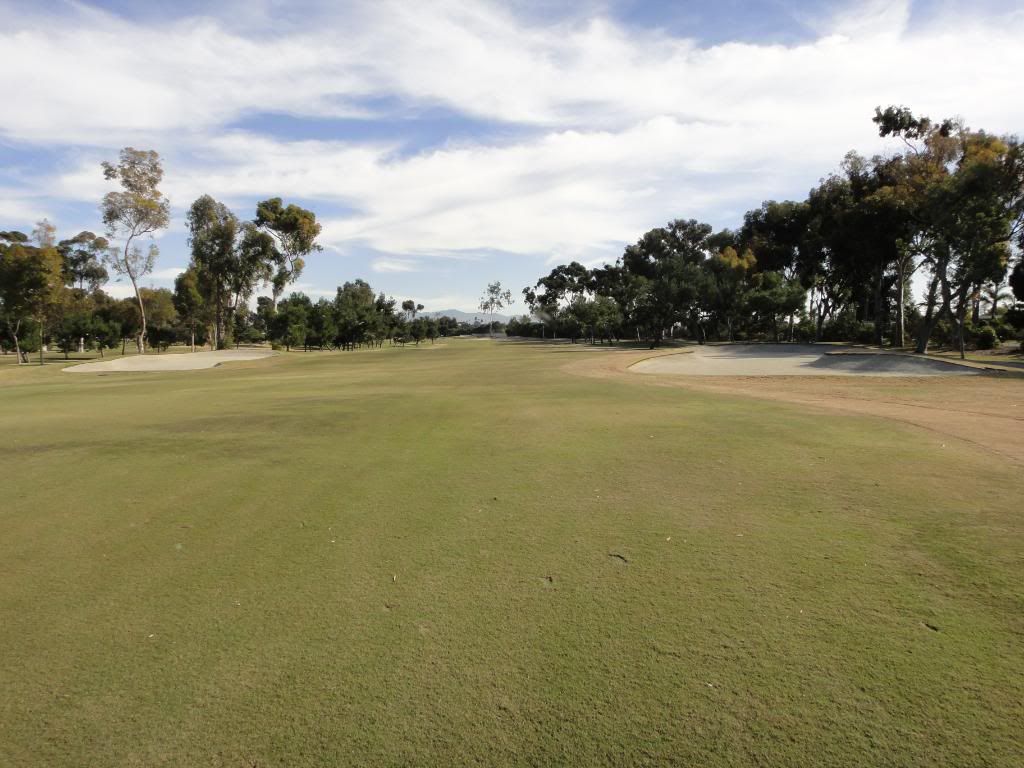
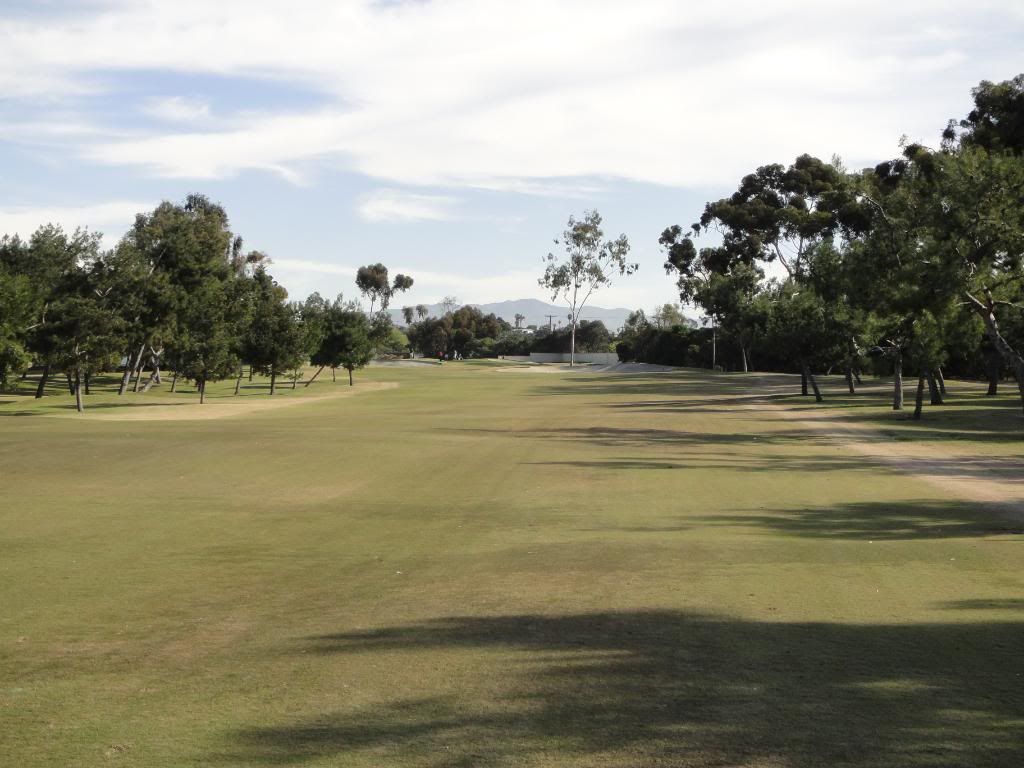
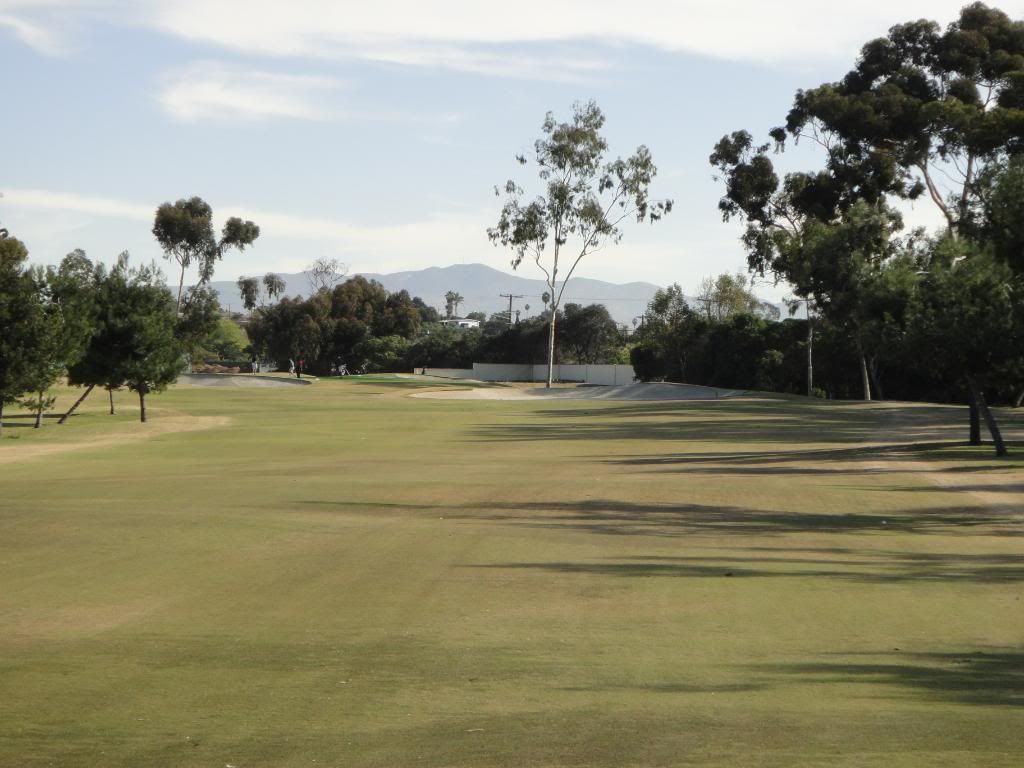
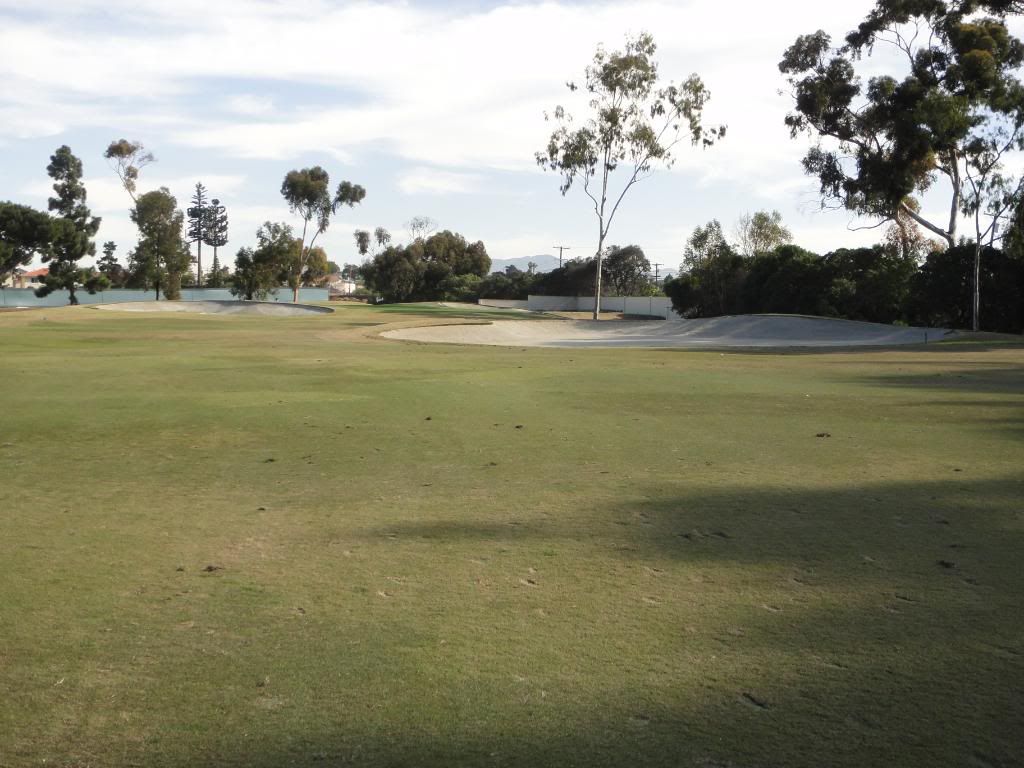
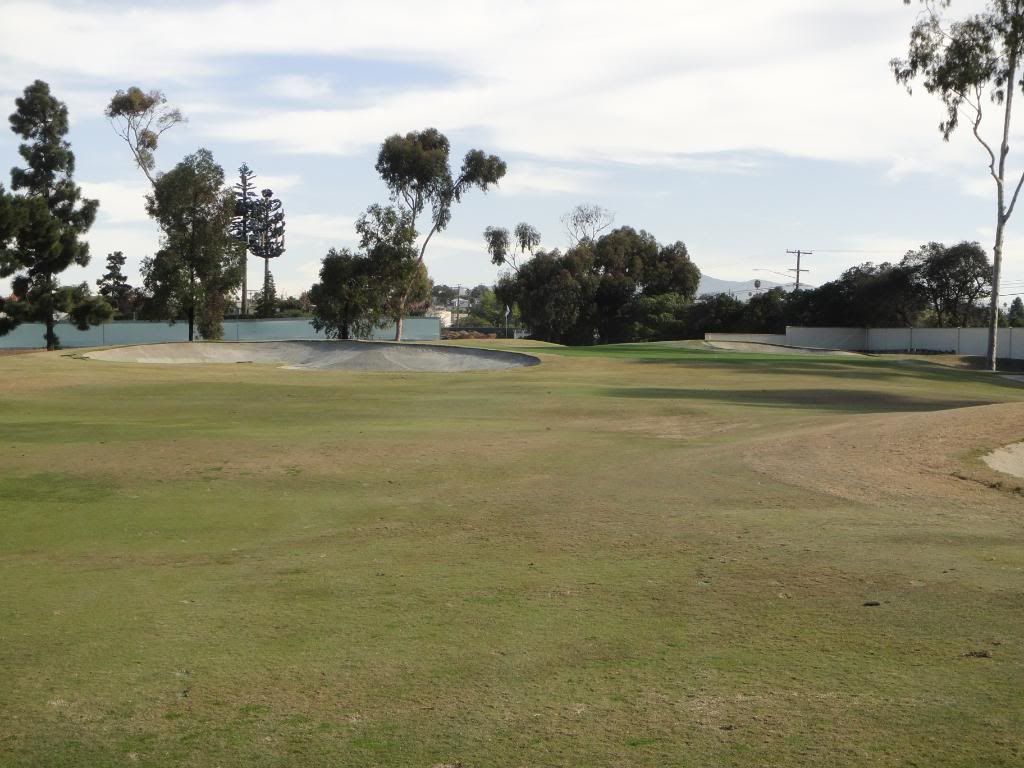
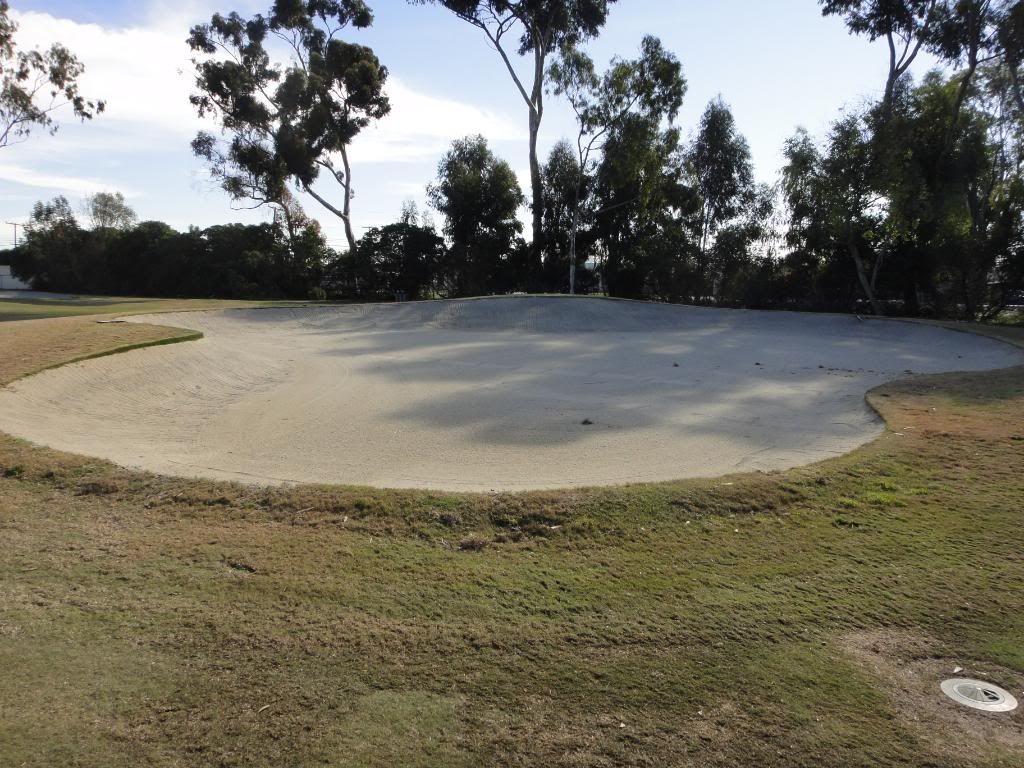
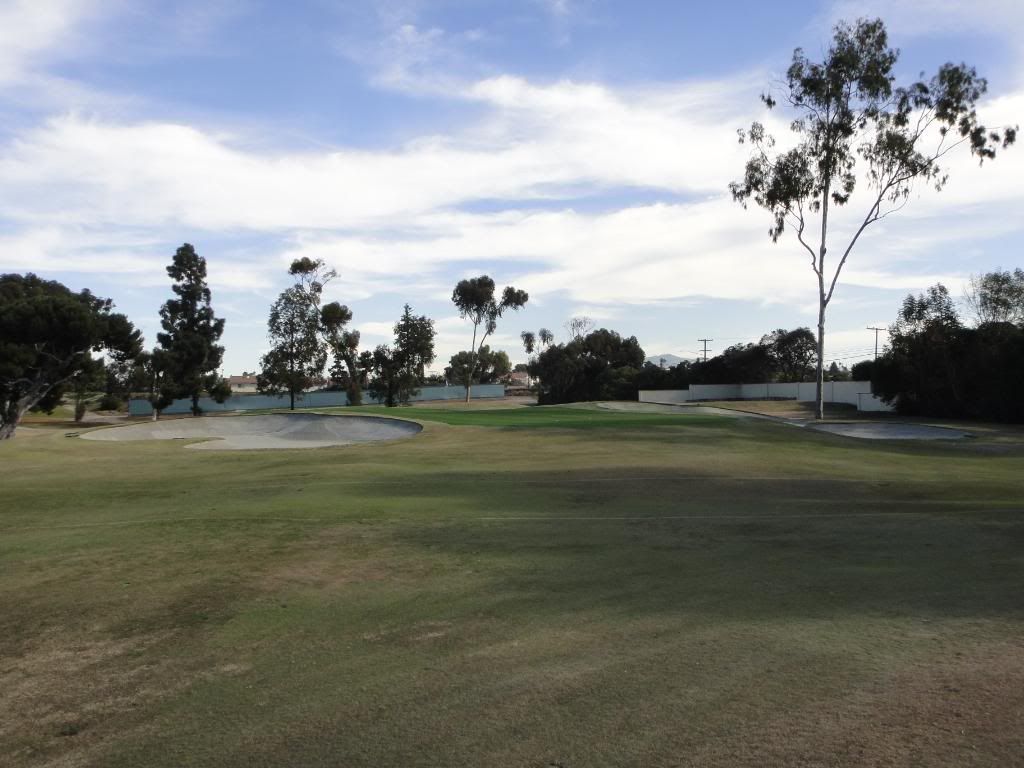

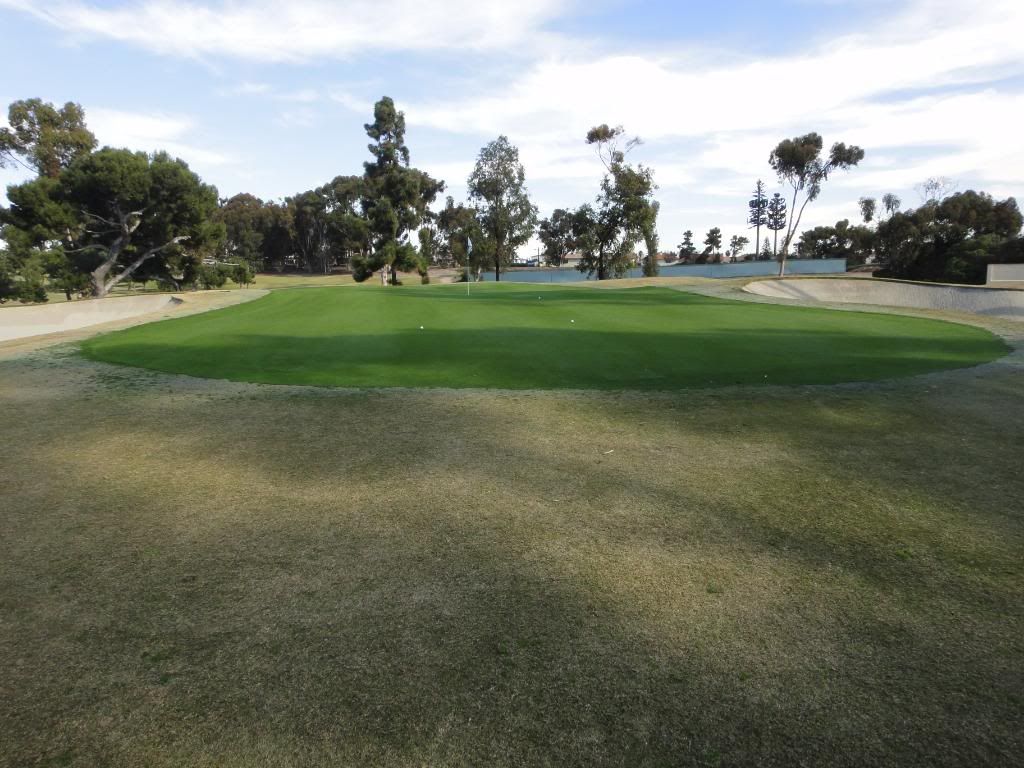
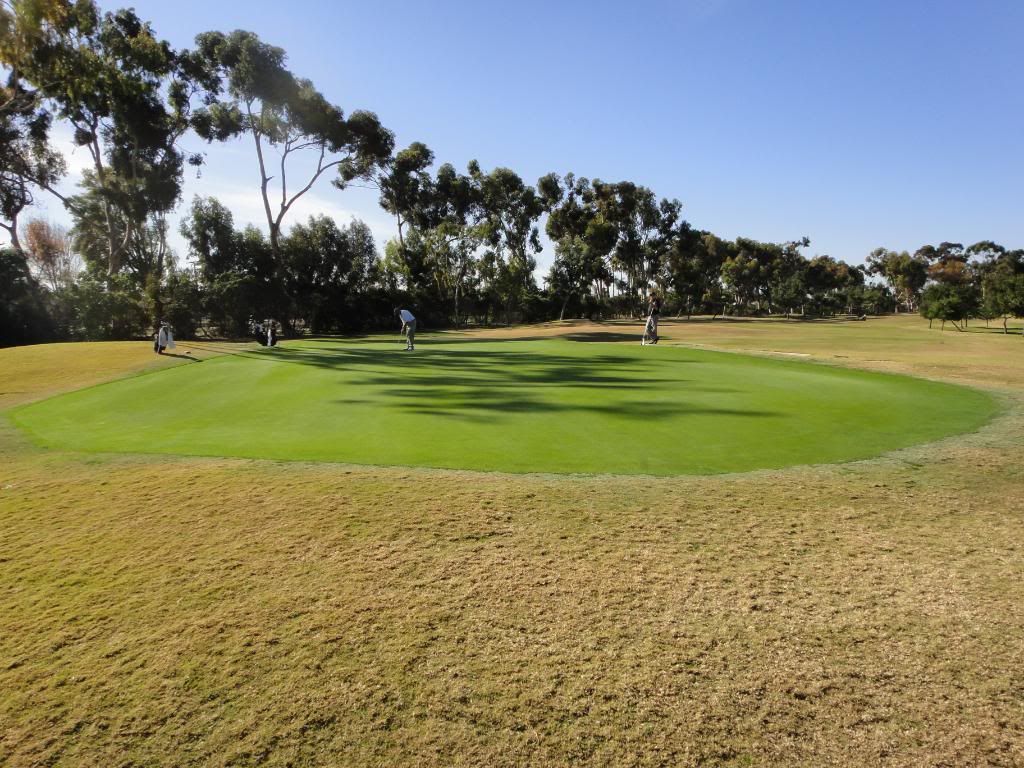
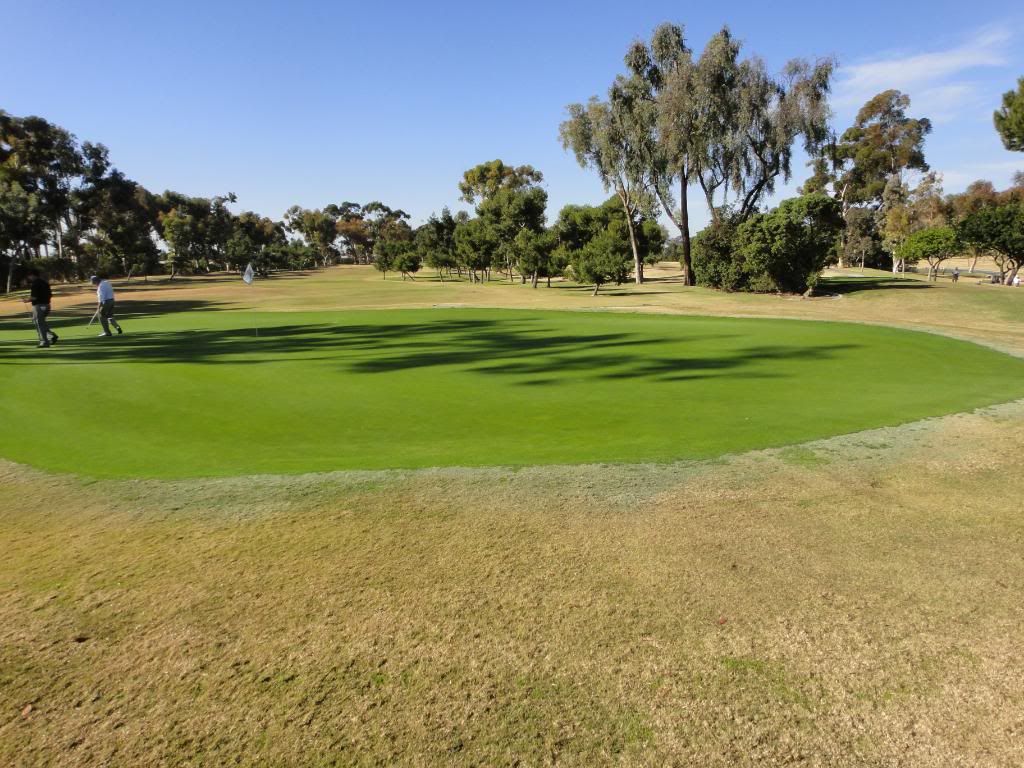
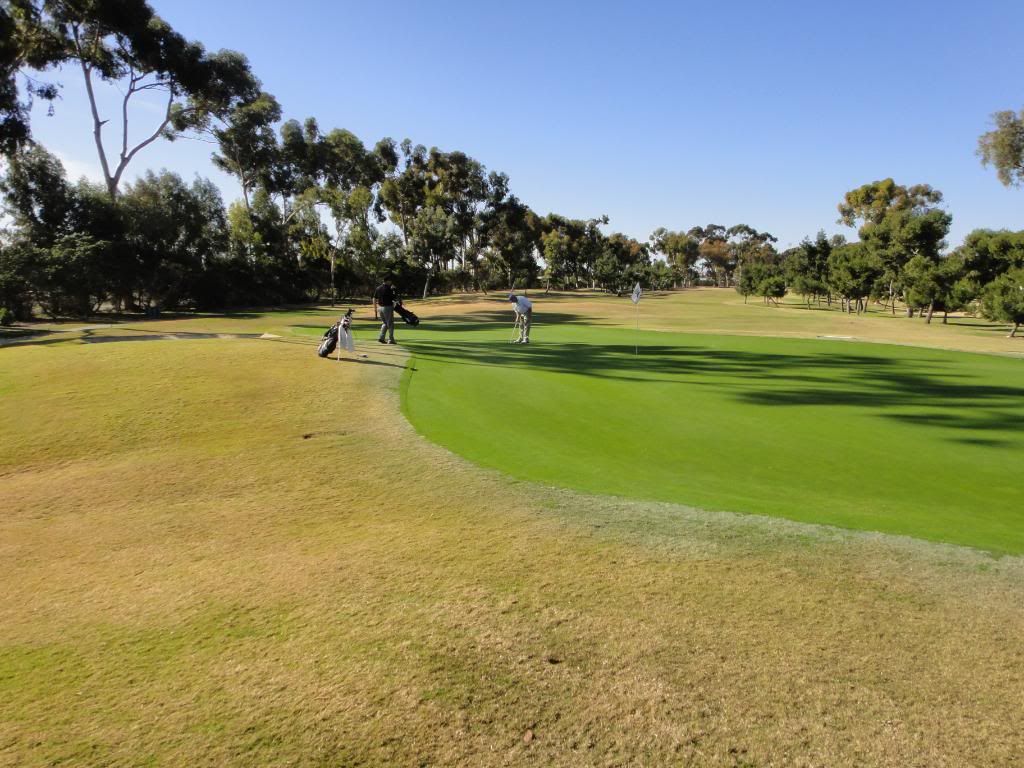 Hole No.17:
Hole No.17: Par 4 367/361/329/296/296 (original 321)
We head north for the final stretch with this par 4. From what I can tell, it appears from the '53 aerial that this hole contained a diagonal ridge to a possibly elevated plateau area that ran the length of the right side where the current row of trees lie. It was much wider previously to the right and closer to the green was quite wide to the left. The orientation of the hole appears about the same in the '53 aerial as now, but I wonder if it had been oriented more towards the ridge right to reward the natural challenge in clearing the ridge to gain a better angle into the green. An earlier aerial would confirm this. This is all suspicion on my part with a risk / reward strategy in mind from the old days. As the hole plays now, one needs to head straight up the right side avoiding the trees or if going left needs to stay short of the fairway bunker left. The angle in from the left seems more challenging, since the green is more oriented to the immediate fairway. The green opens up, but don't land short as the front can deflect and the ball can run down the fairway from right to left.
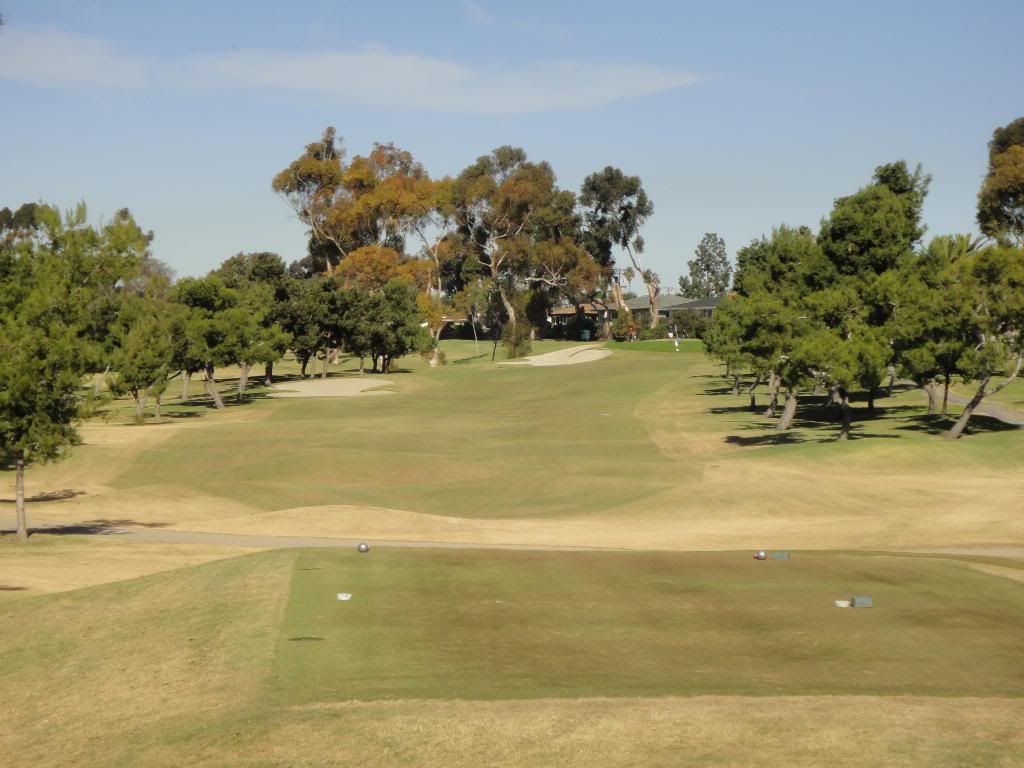
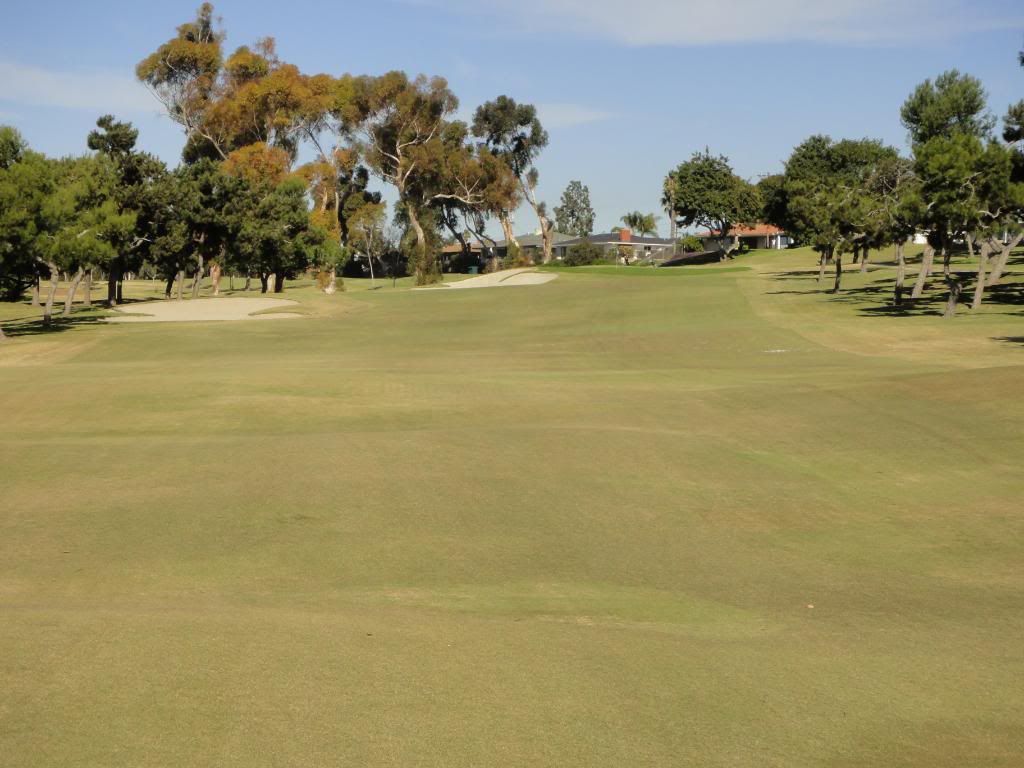
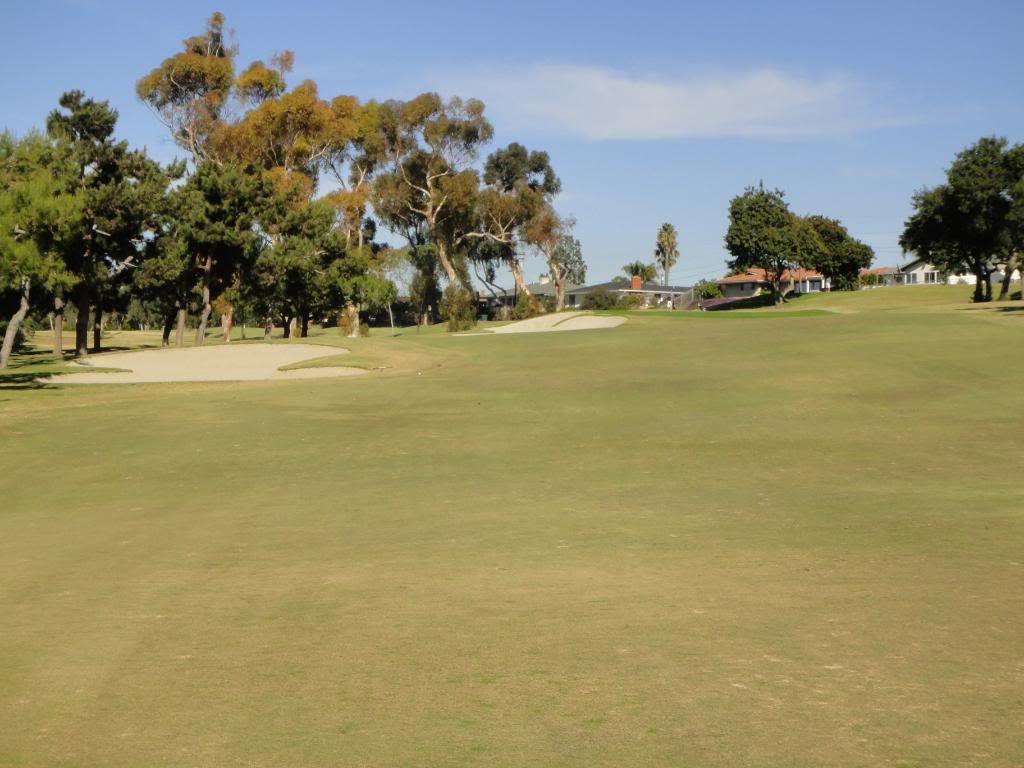
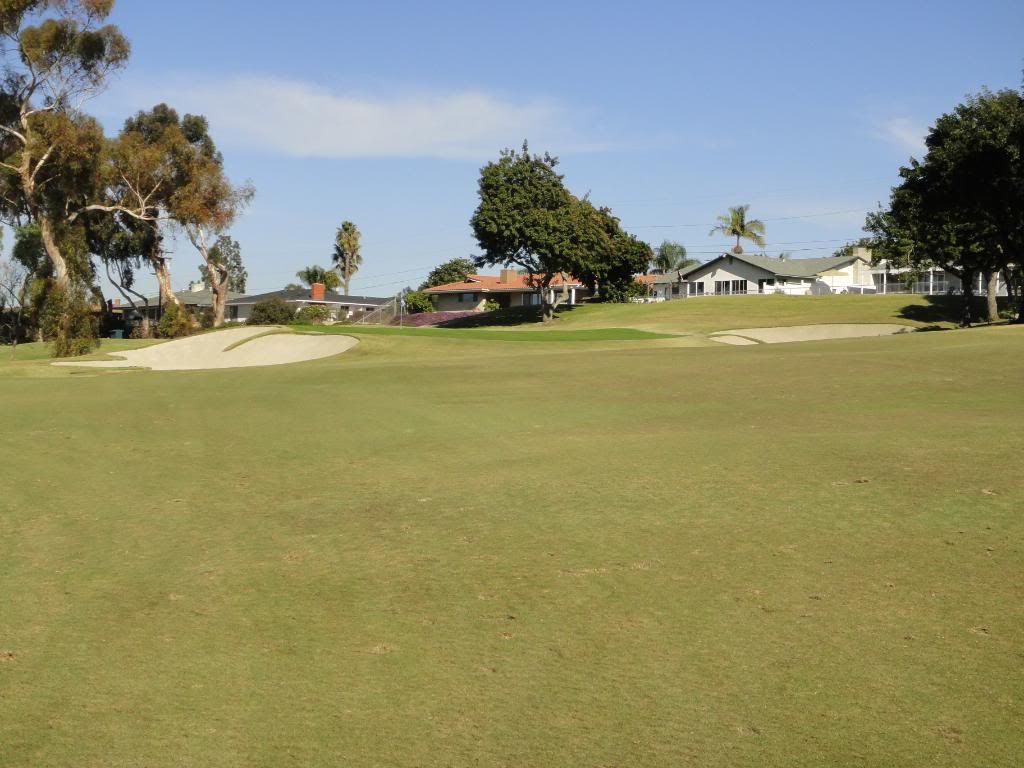
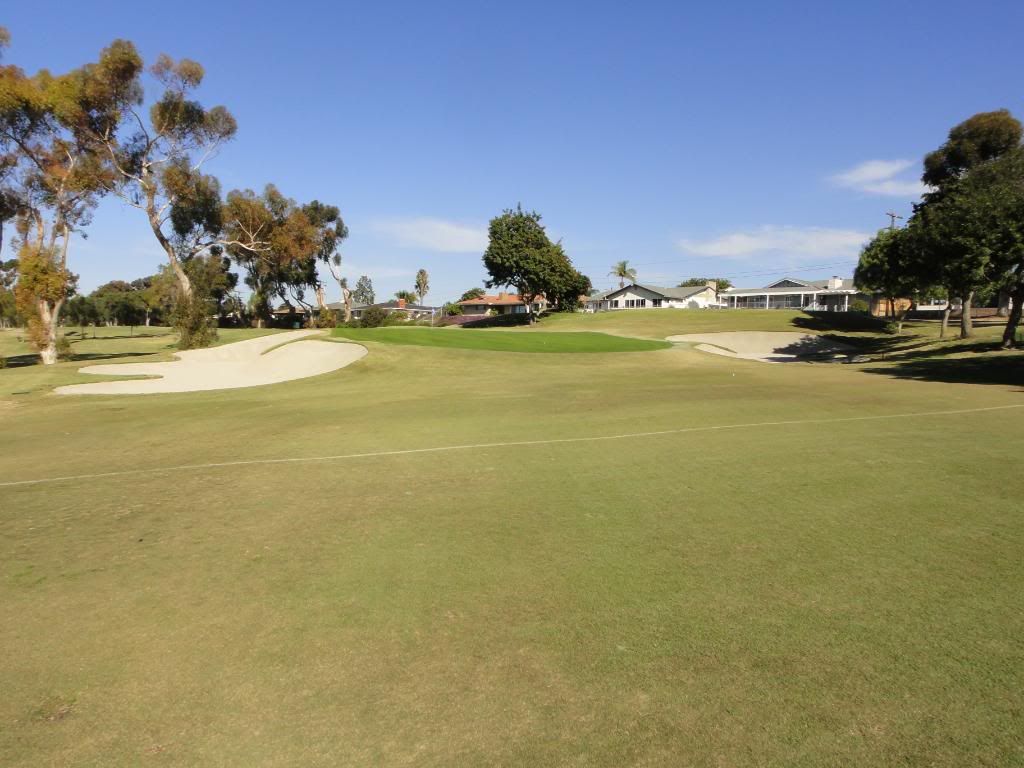
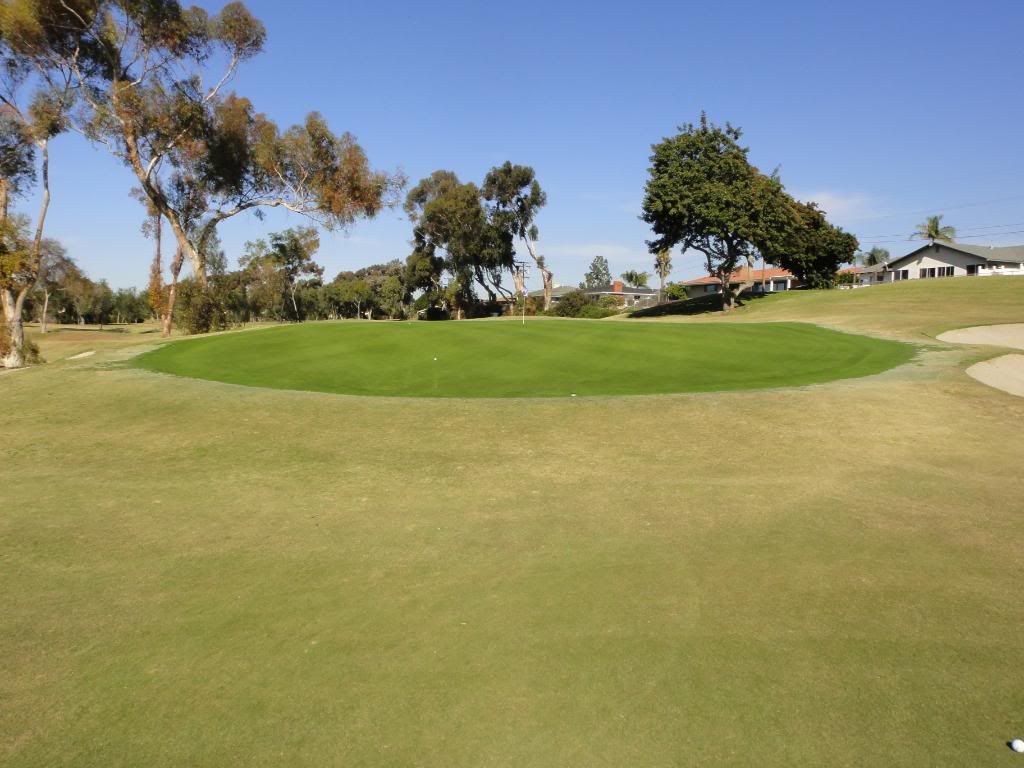
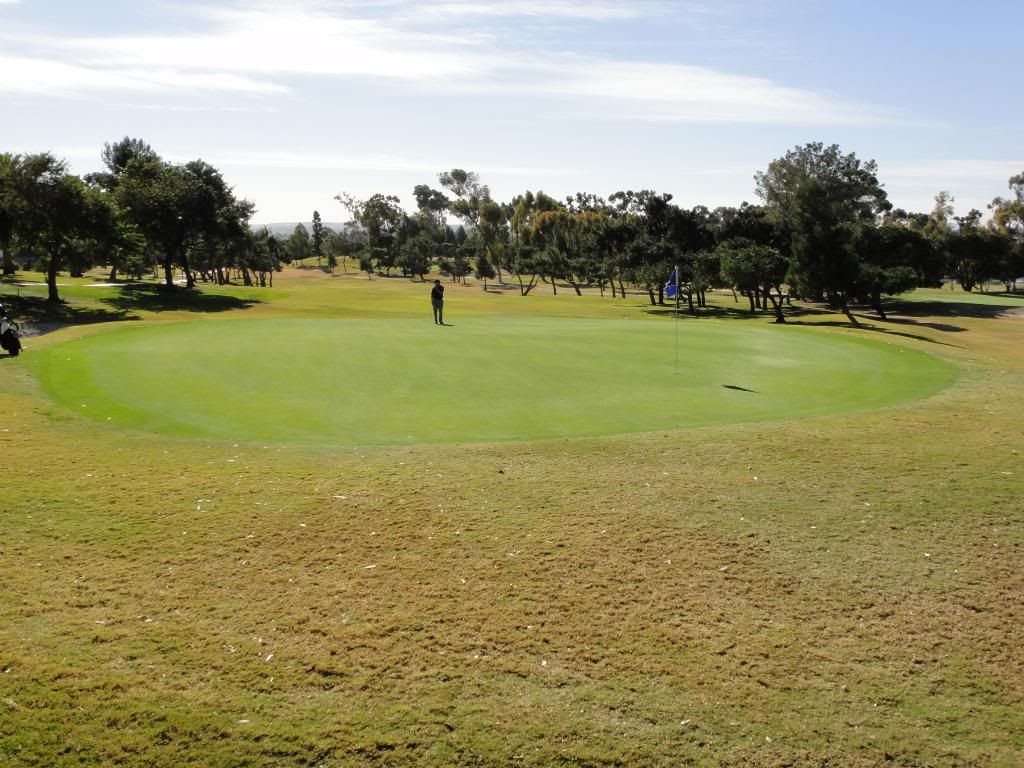
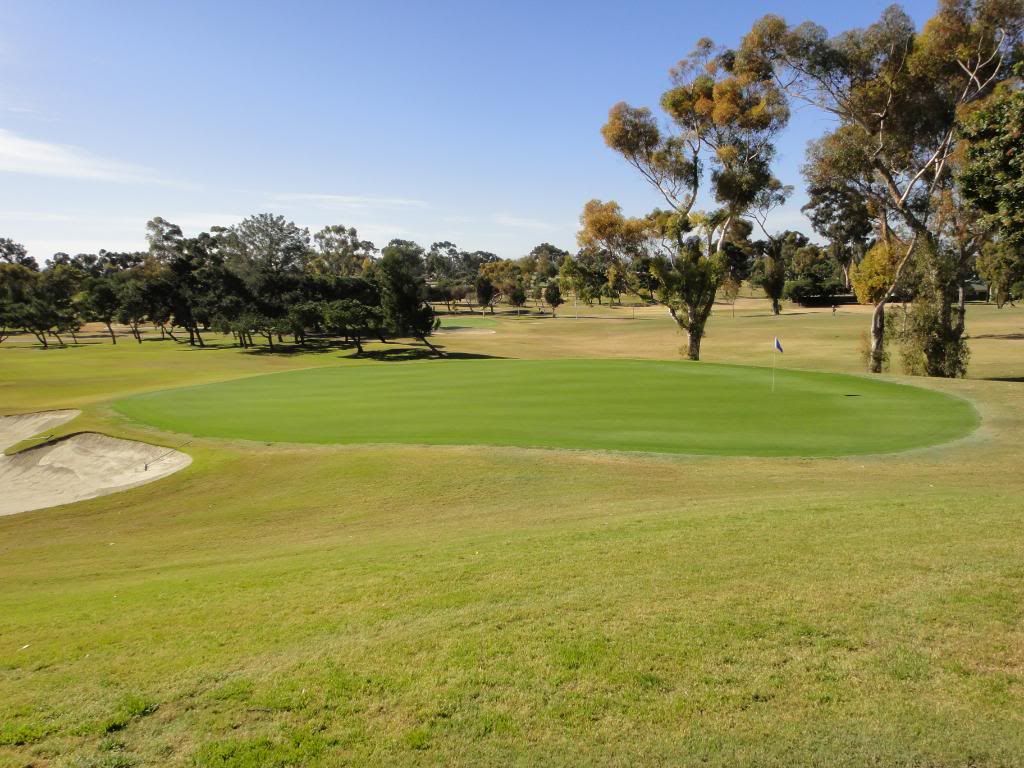 Hole No.18:
Hole No.18: Par 4 460/418/403/289/289 (original 425)
Our final hole ends at the footsteps of the clubhouse and is quite a fitting finish. A strong finish and rather memorable. As you can see from the old photo (courtesy of David Stamm from a previous thread of his), the approach and bunkers were quite different when the course initially opened. Notice the central like fairway bunkers in play... From the photo, it appears there was a string of central fairway bunkers that ran diagonally from bottom left of the photo to upper right before getting cut off by the edge of the photo. The green orientation and green bunker placement seems to encourage a right to left entrance as well. This to me makes sense in the context of the natural topography and early risk / reward strategy in mind. If you risk clearing the hill to the right (which is tougher and failure to clear it will leave you not only short but likely blind), you're rewarded with more room to get the power boost and not run into one of the central fairway bunkers. Take the low risk route left where there's less ridge to clear and the left side fairway bunker has a chance of coming into play + you'll be left with a much more challenging angle into the green and a longer shot too. When we look at the 50s aerial I posted on hole no.9 that shows the 9th, clubhouse, and ... 18th, we see the orientation of the 18th in that photo still favored a right to left entrance. Today the green is very different. I wonder how much of those central fairway bunkers might have existed on the other holes as well when the course first opened. Today, the bunkers only protect the green. From the tee, the shot still calls for a right to left draw to the right to gain a power boost. However today, I did not see much of an disadvantage in going either right or ... left. There's little danger and punching out from under the trees to the left is not all that difficult. The challenge is on the approach and on the green. Without question, I liked the approach, but when one sees how it was initially ... you feel a little bittersweet somewhere. At least I did. It makes we want to hit a knockdown runner up the right side and watch it turn. But all in all, still a damn good hole. The second old photo dates from the 1950s.
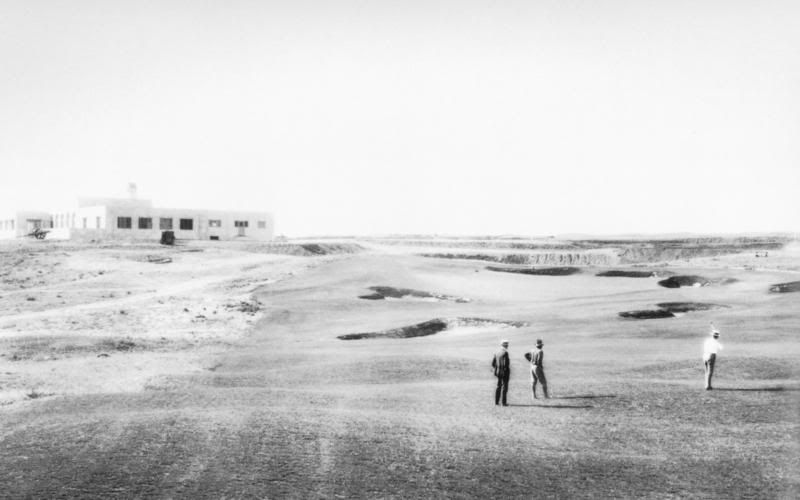
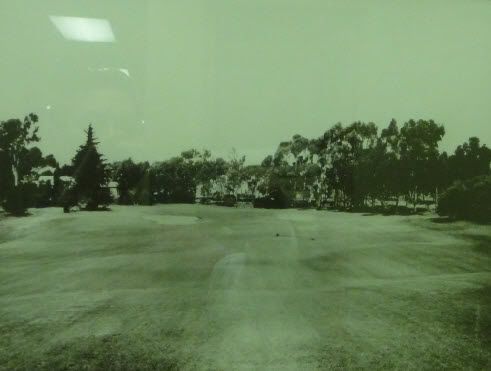
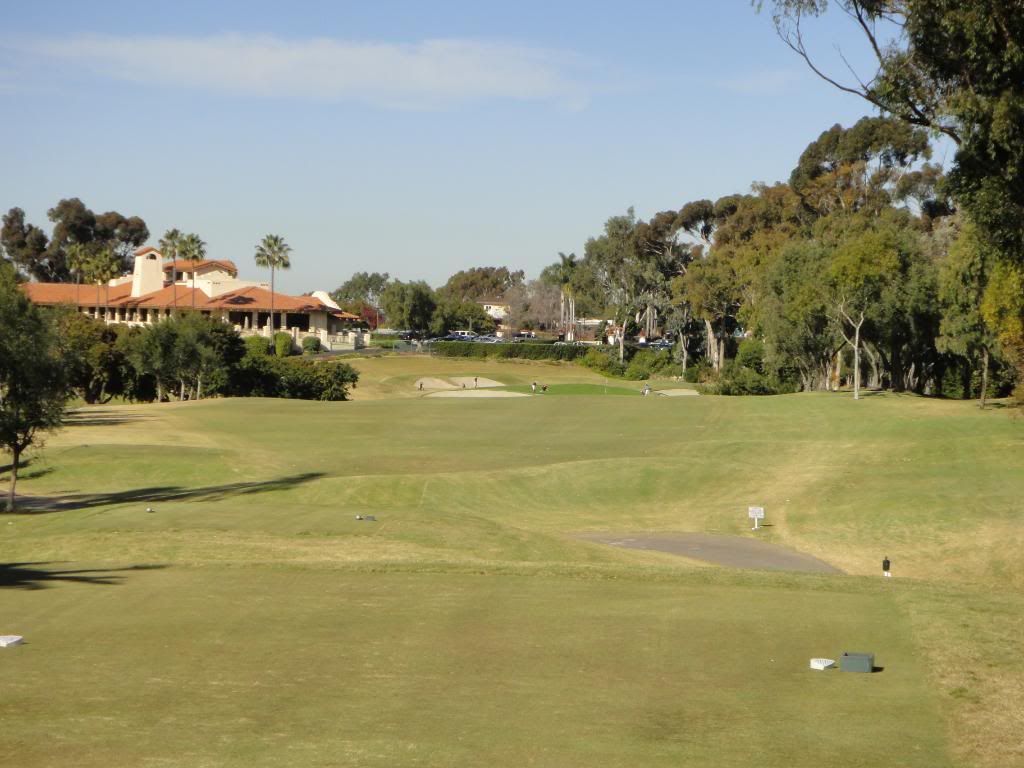

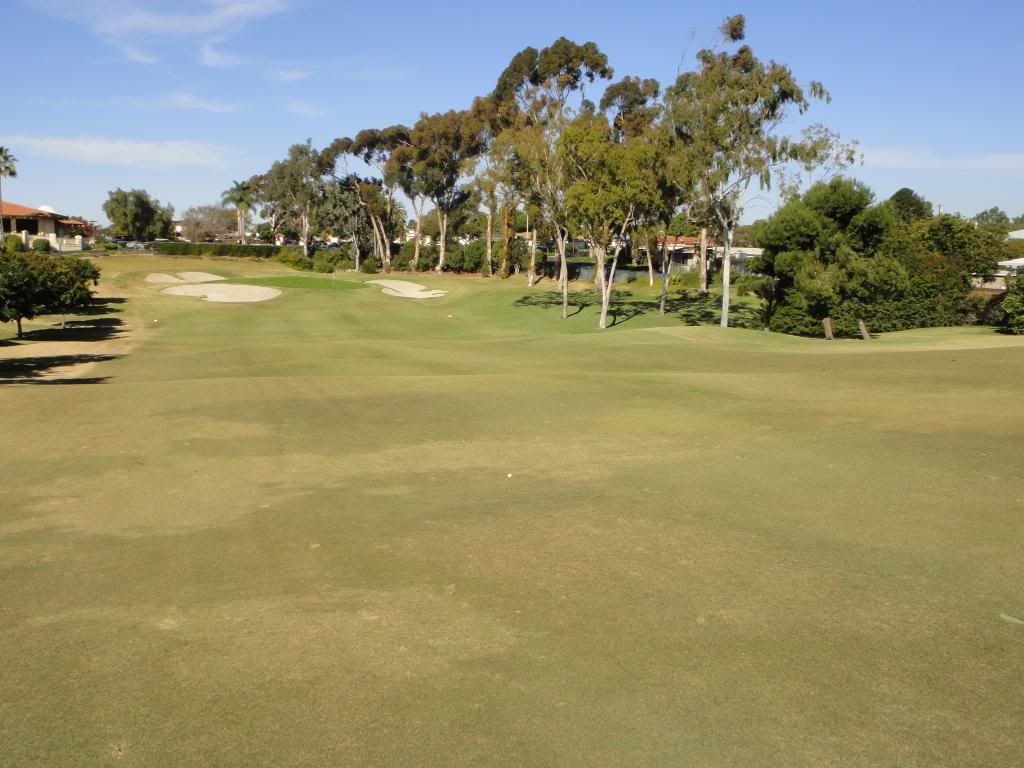
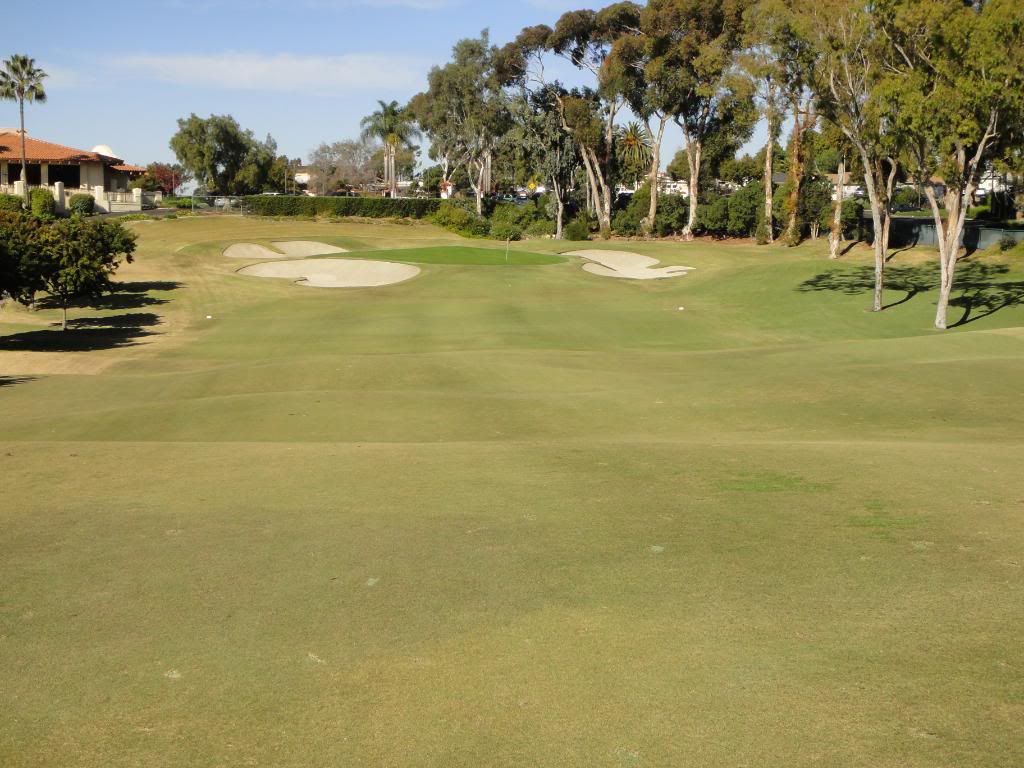
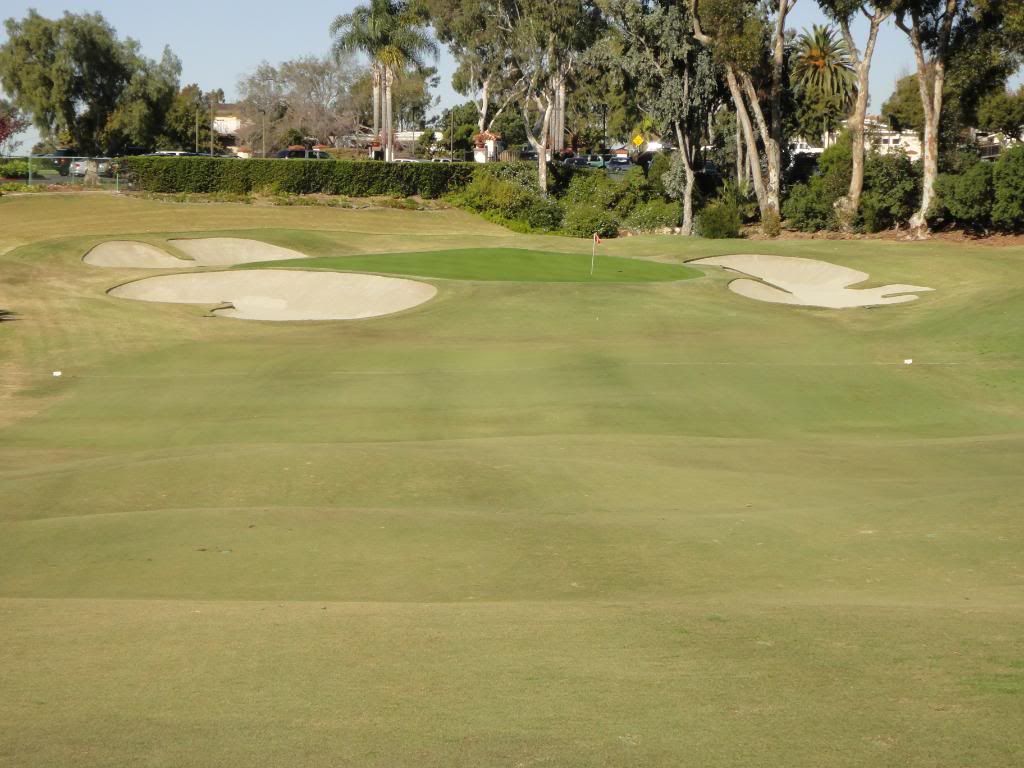
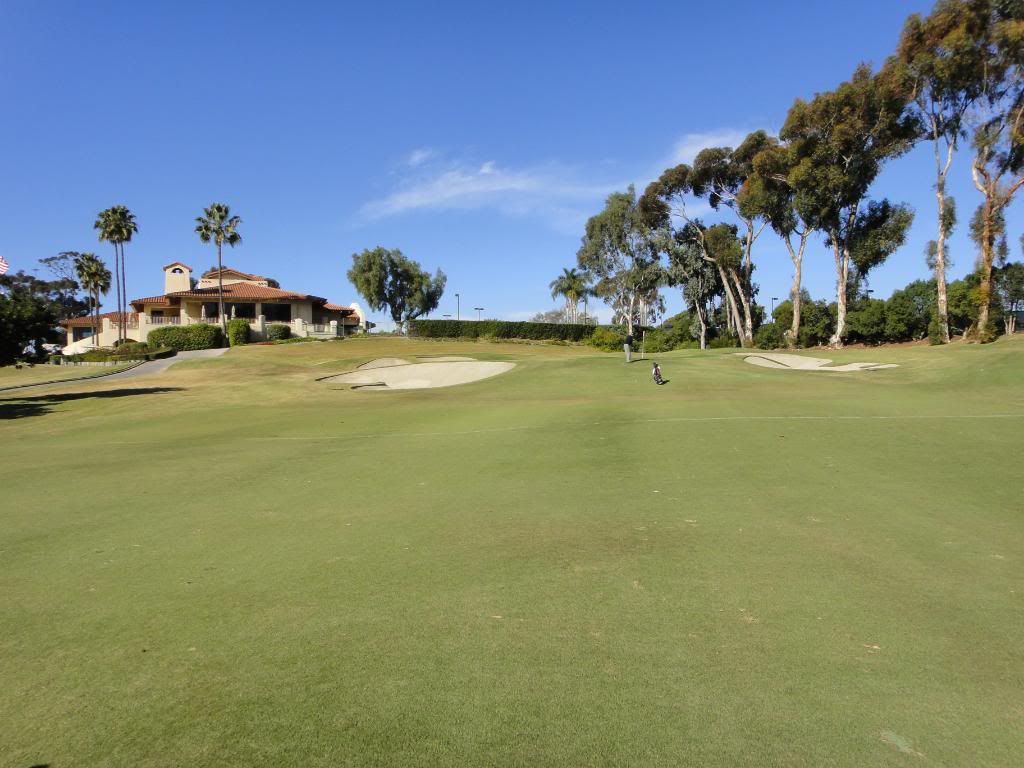
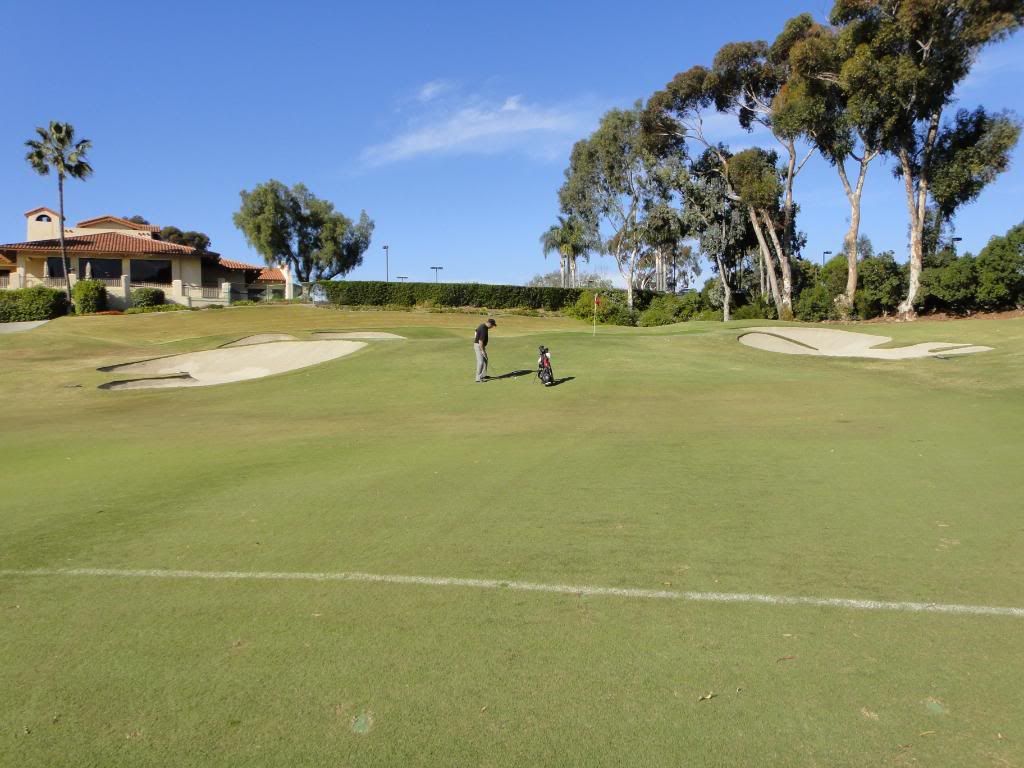
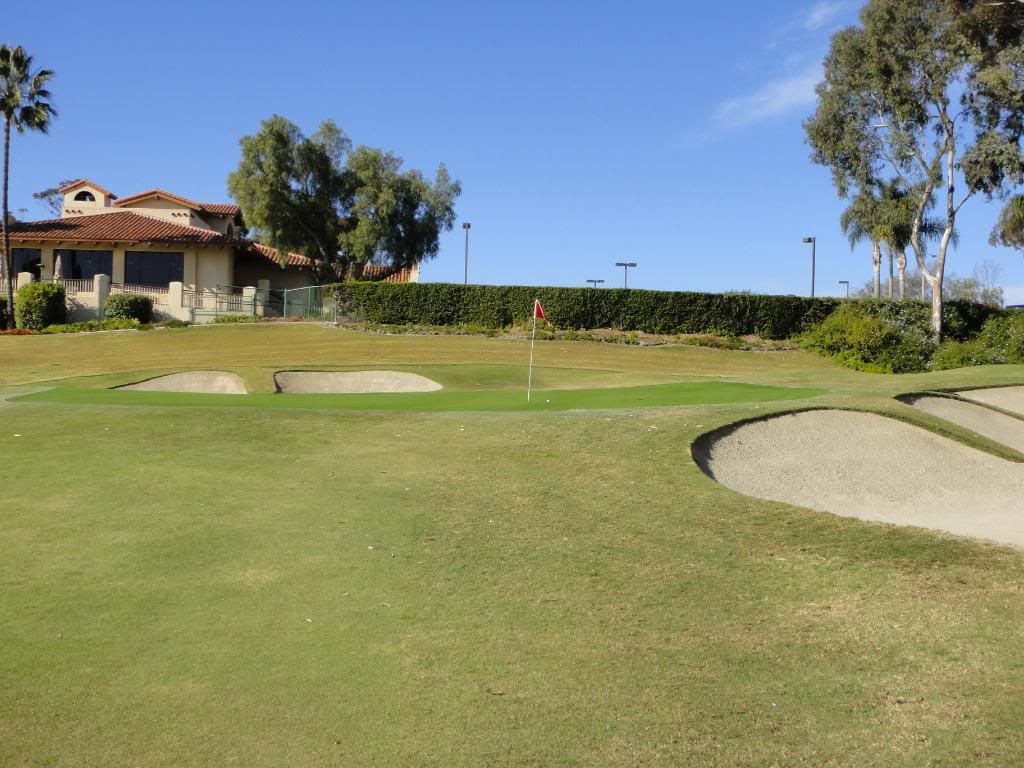
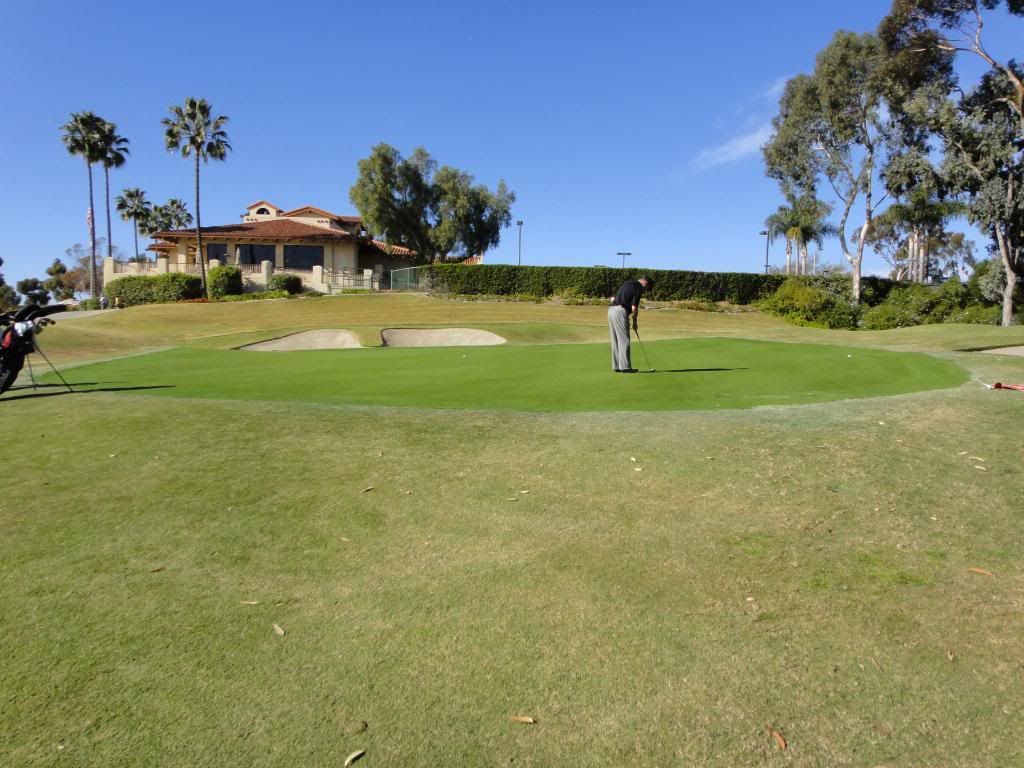

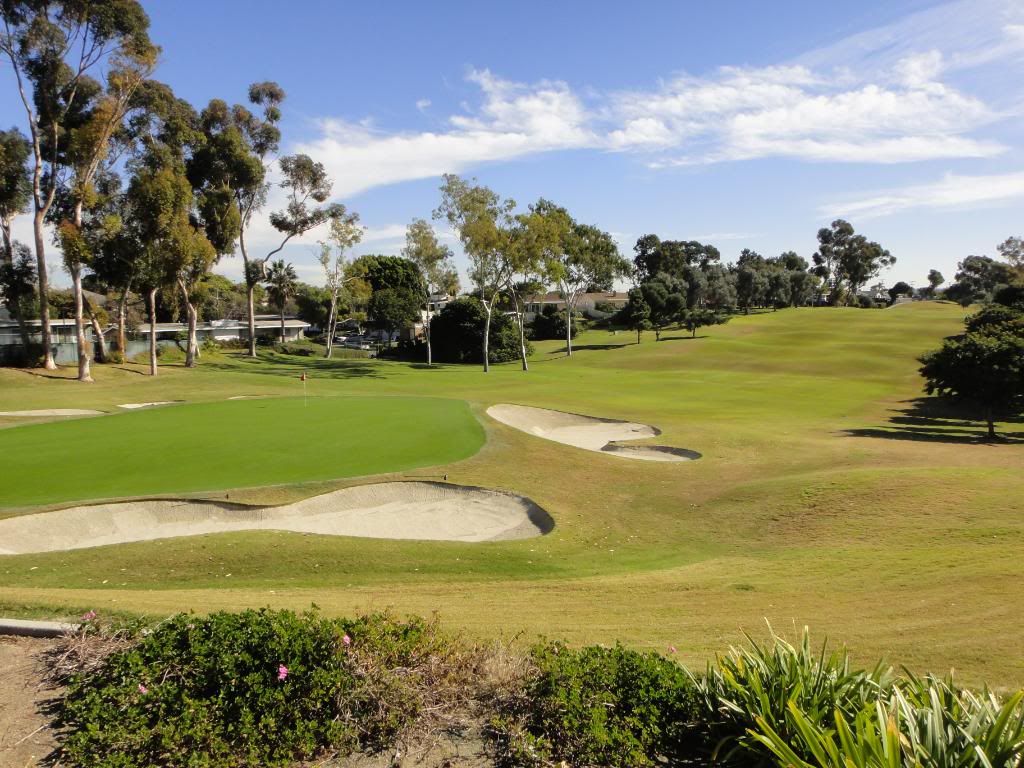
And that's the back nine...
An enjoyable course and one I could easily see myself playing everyday.